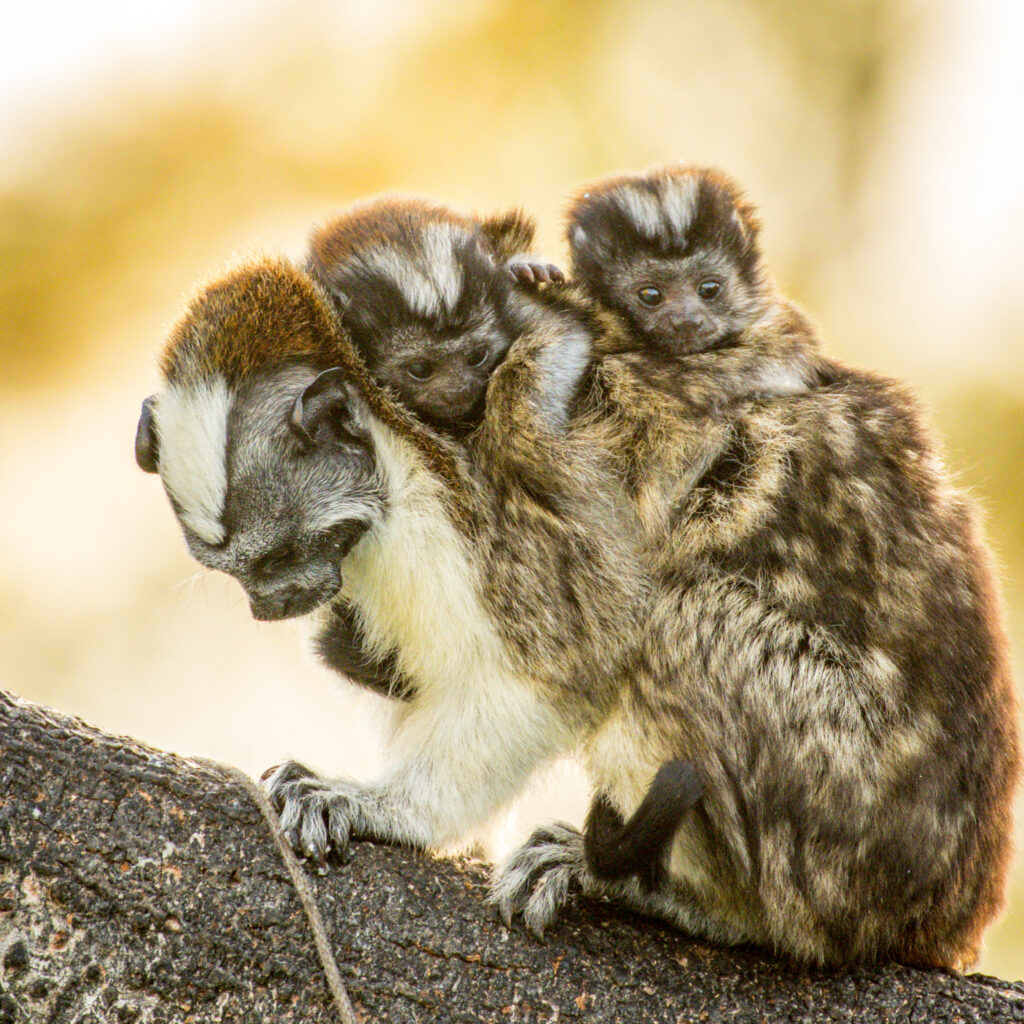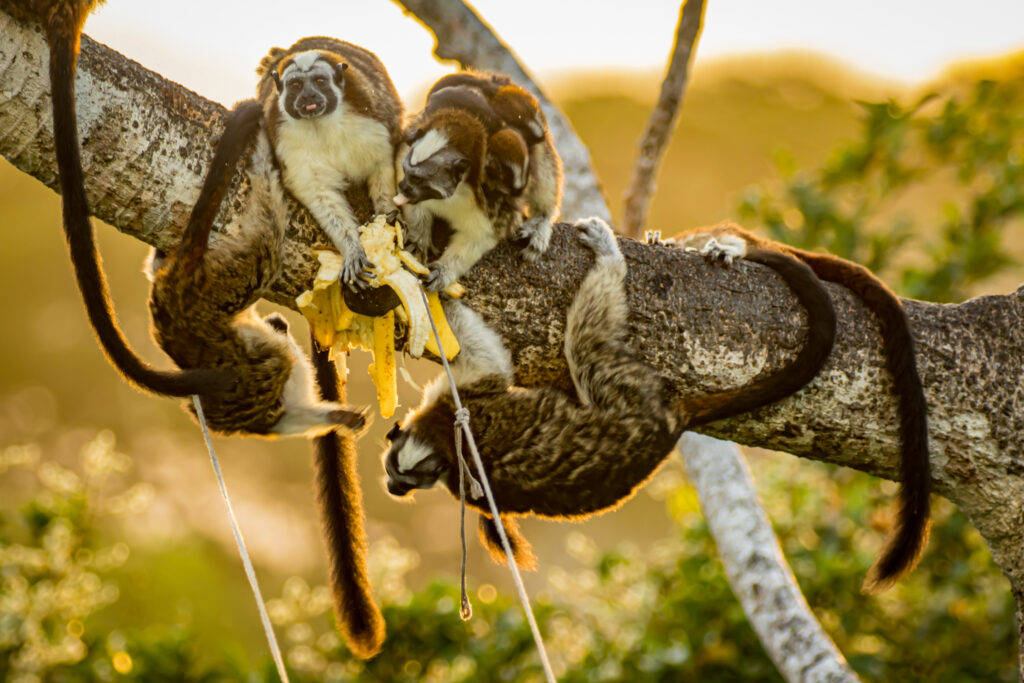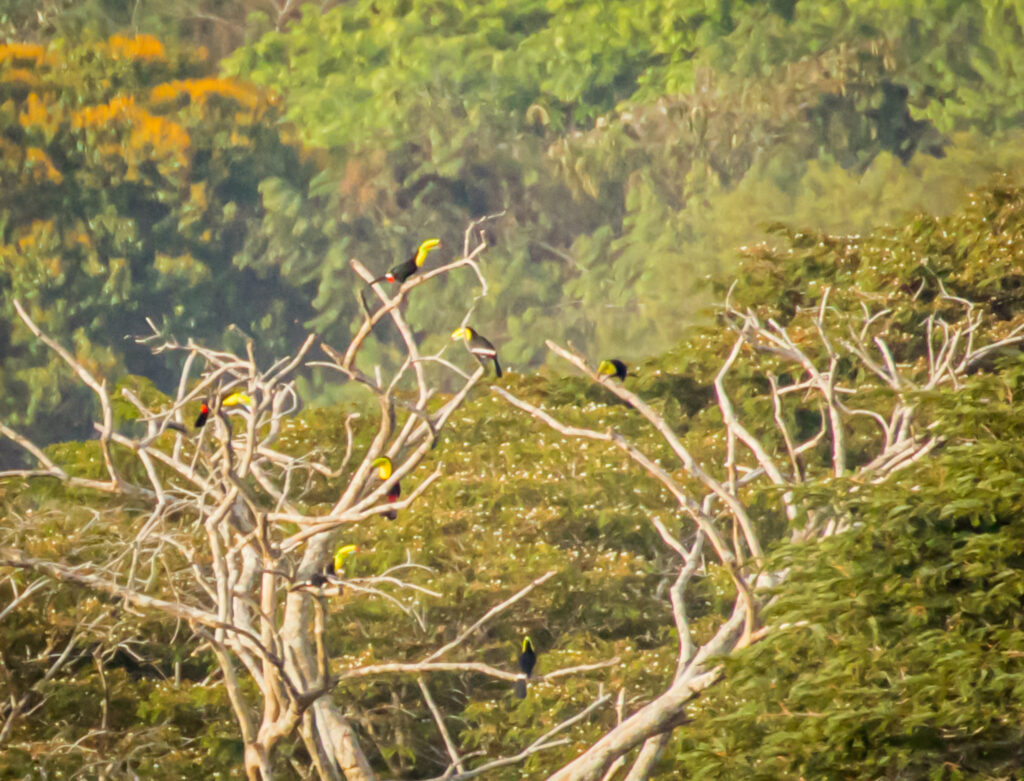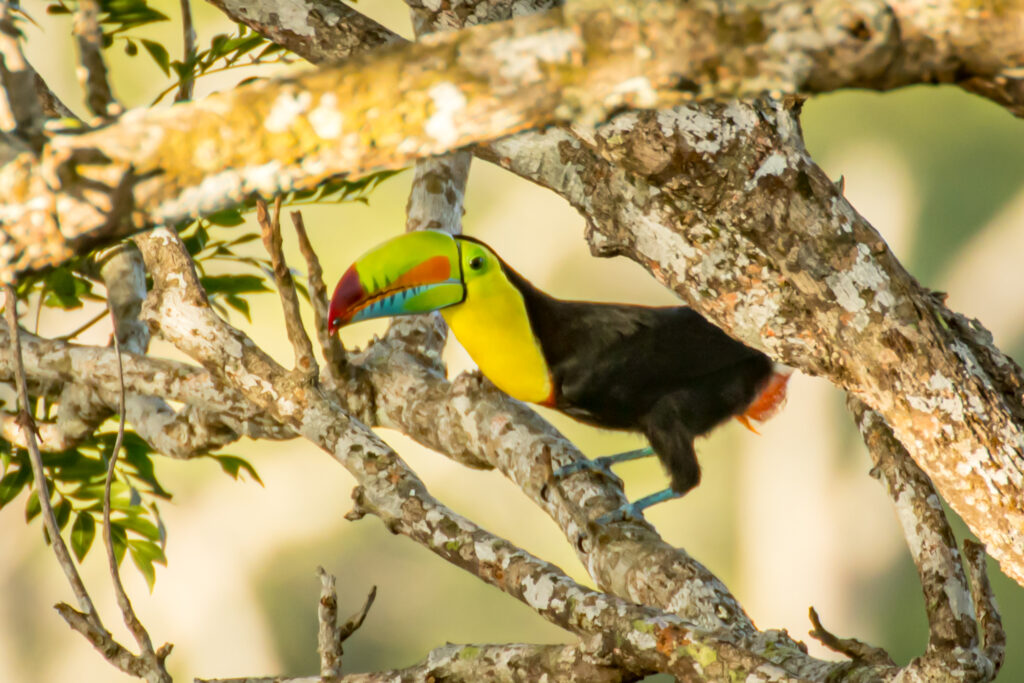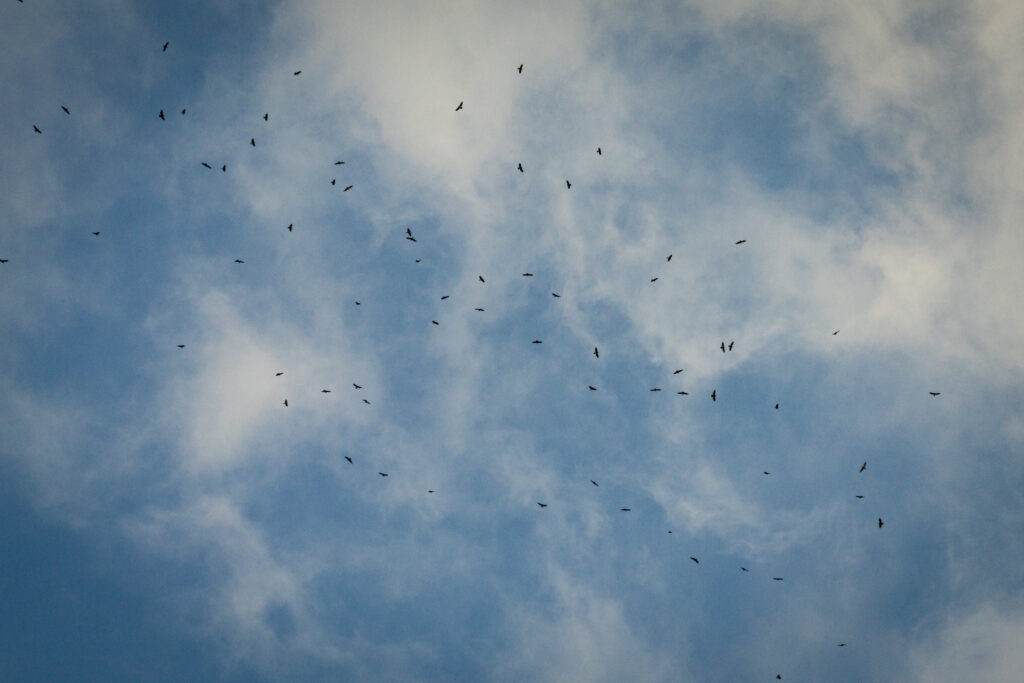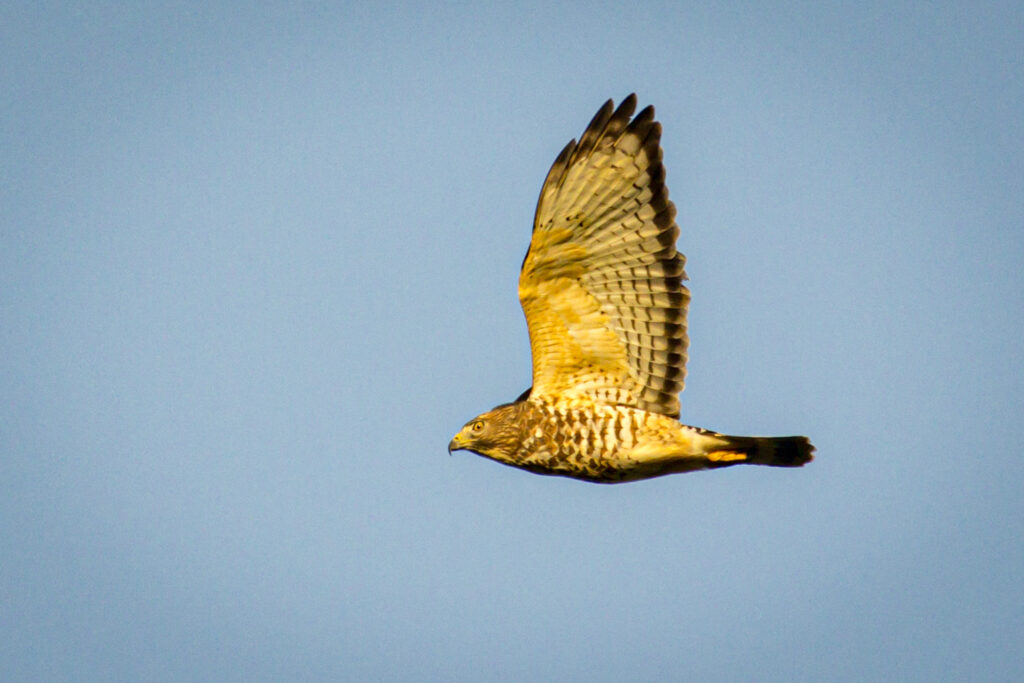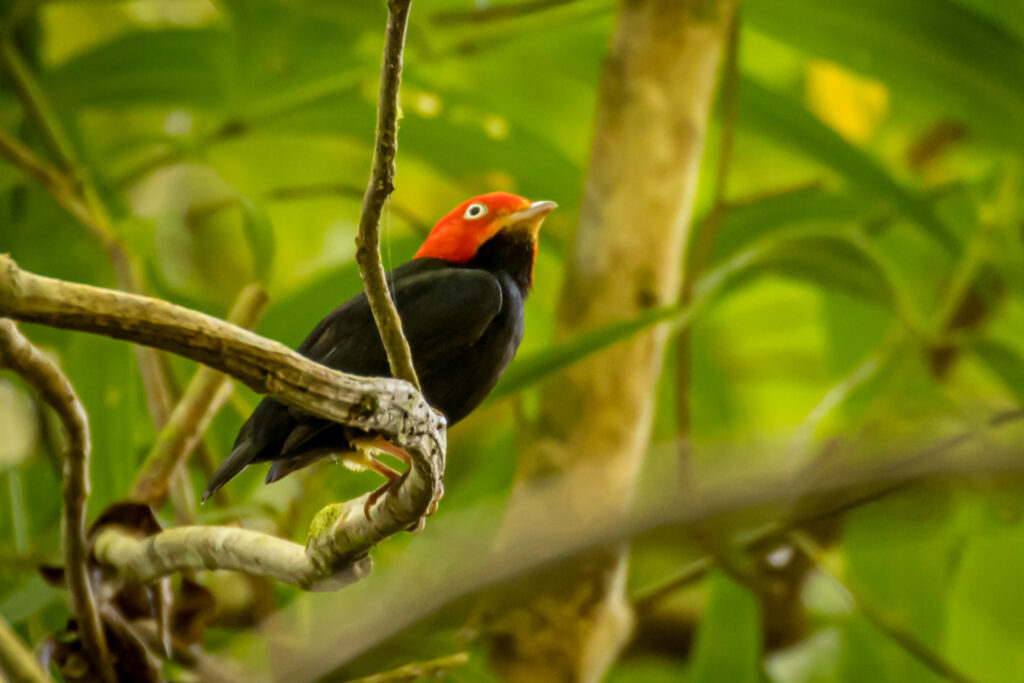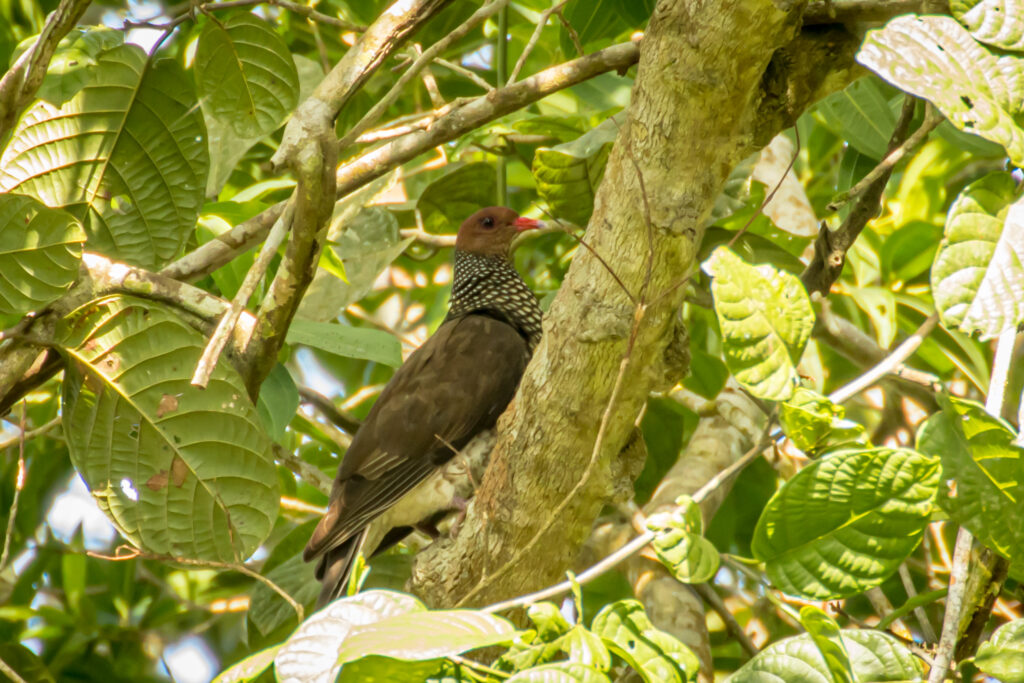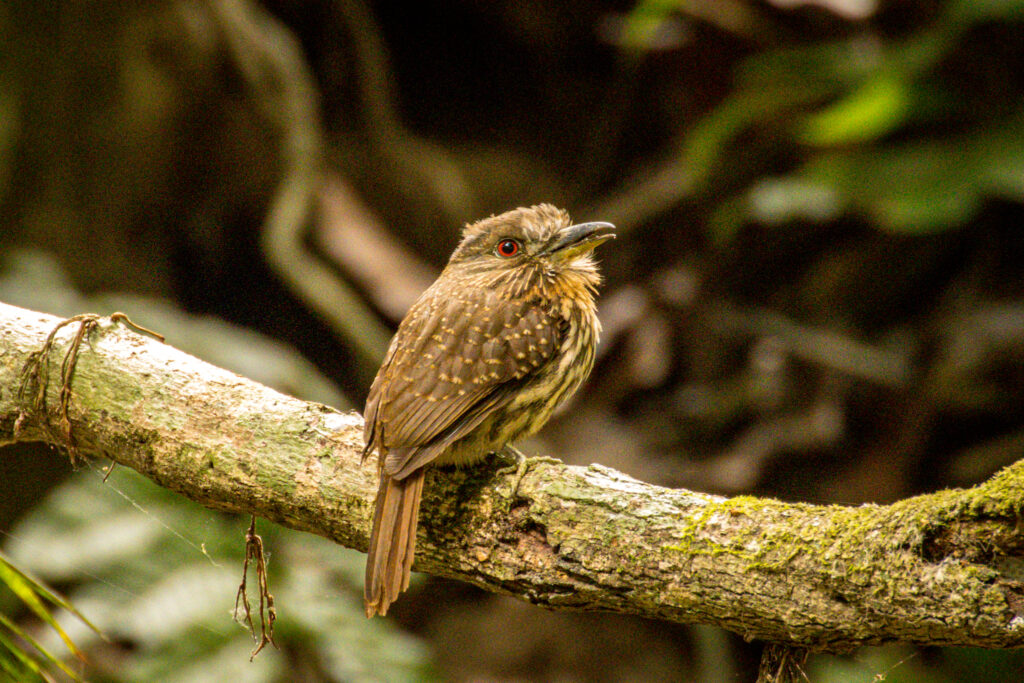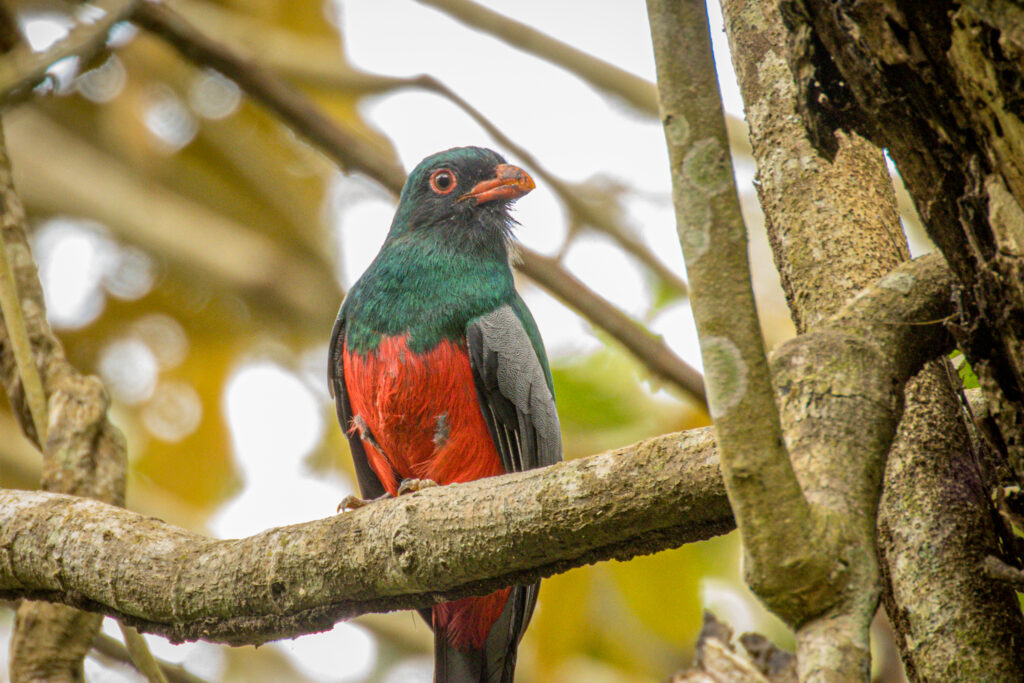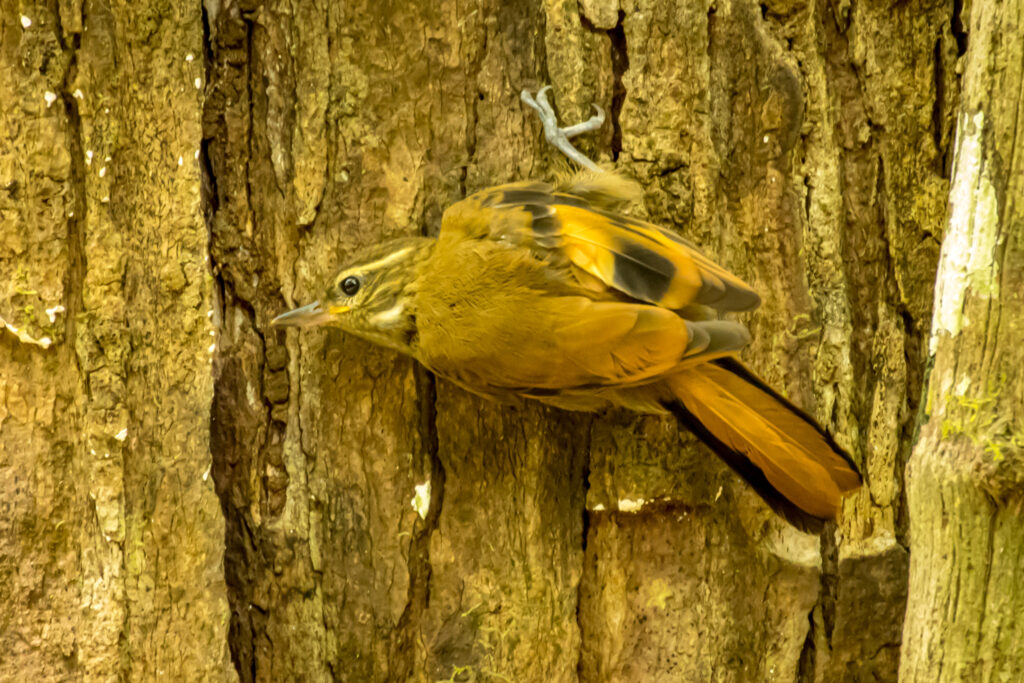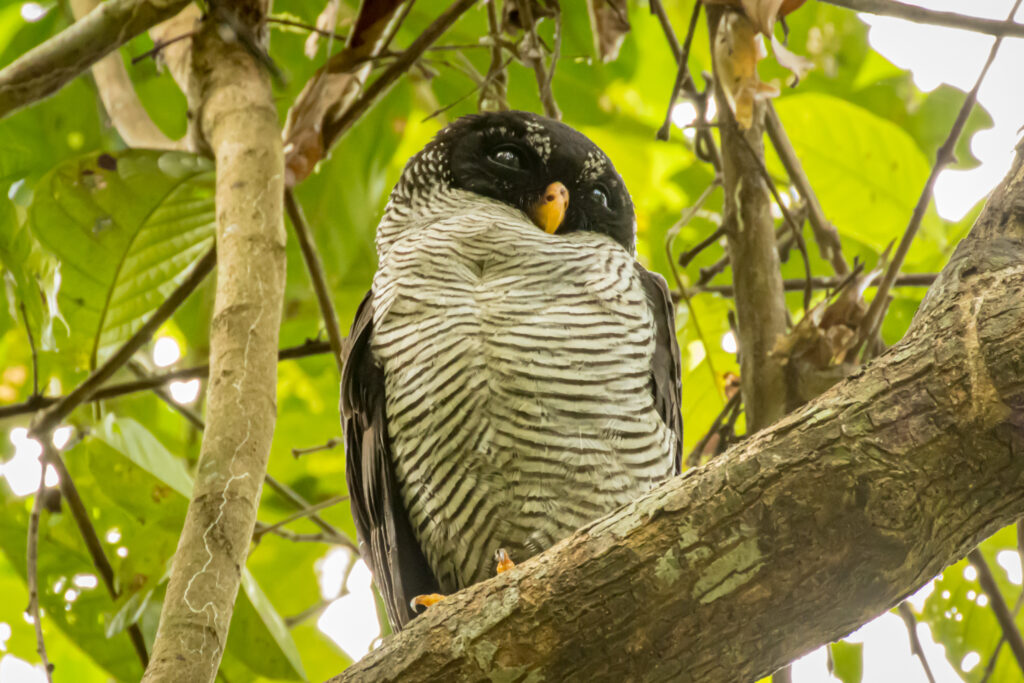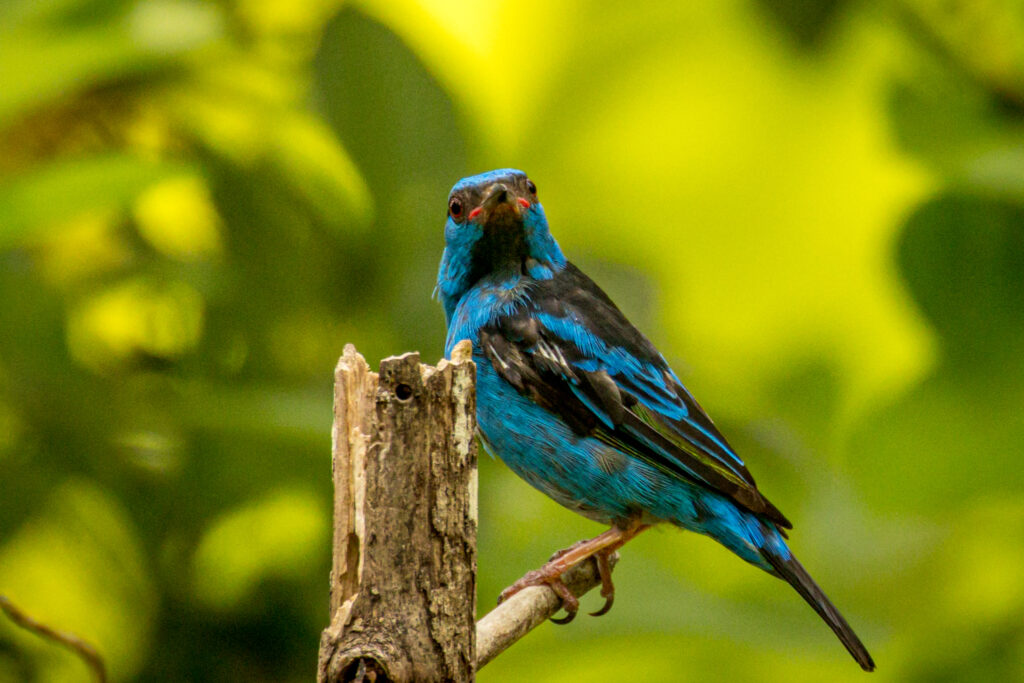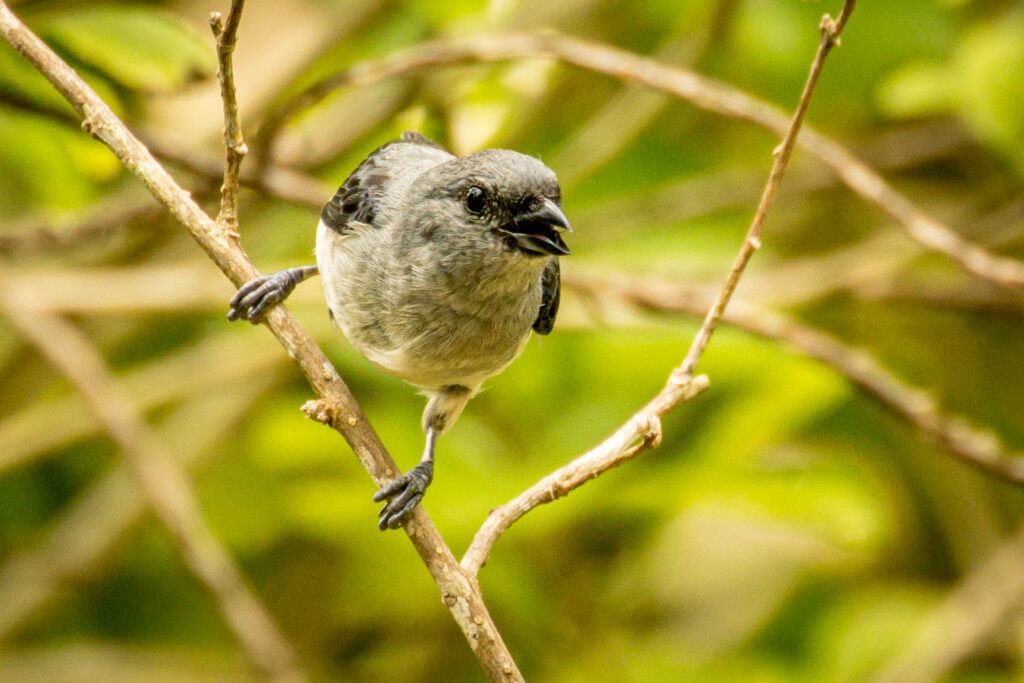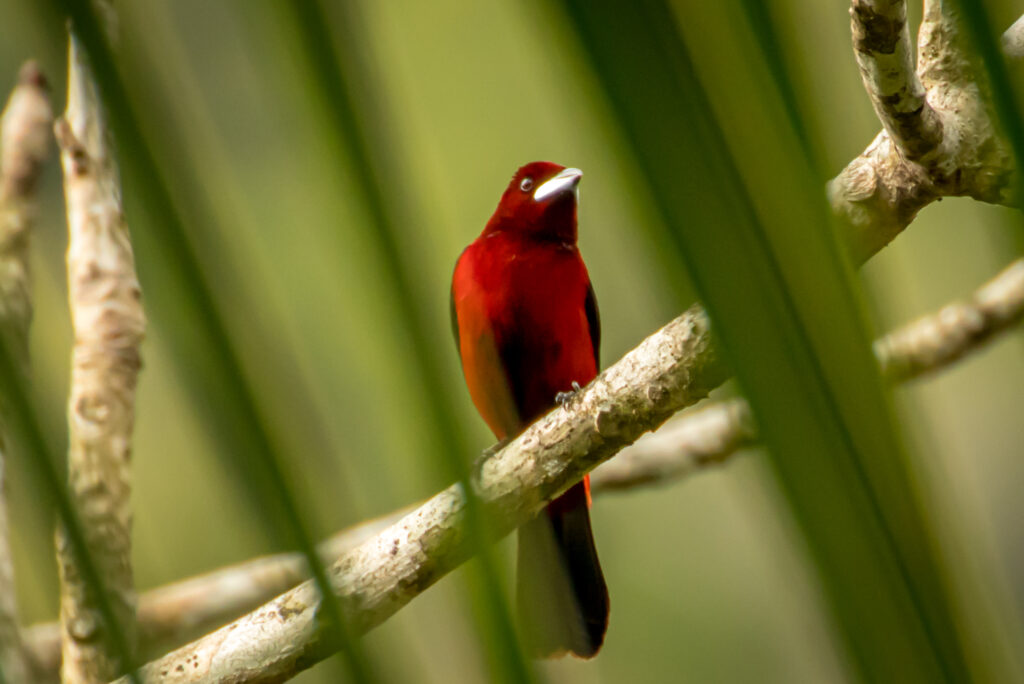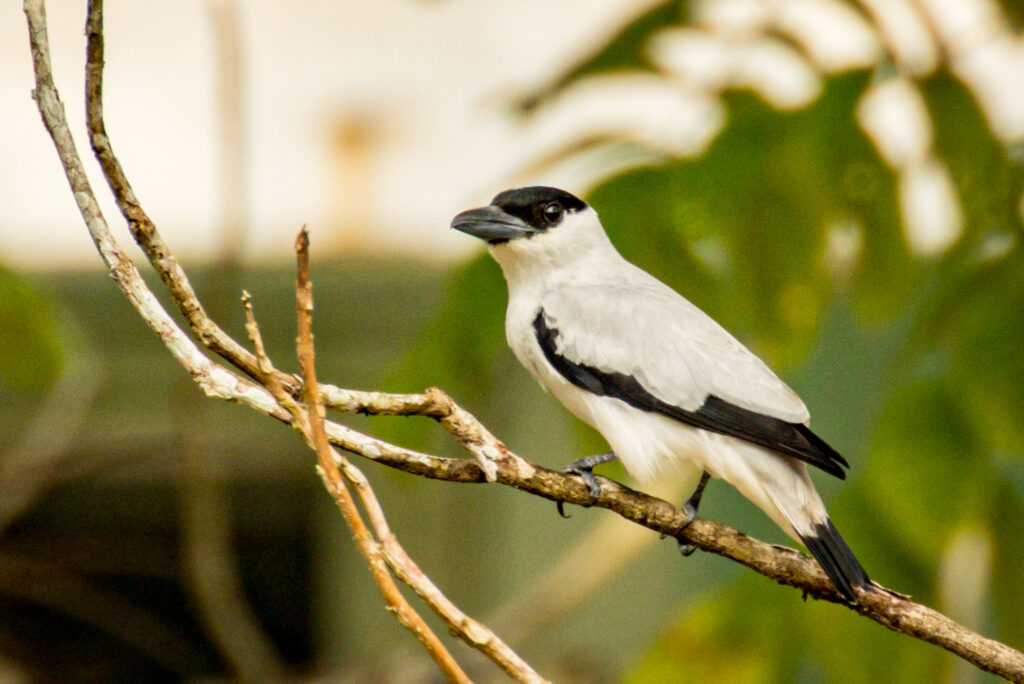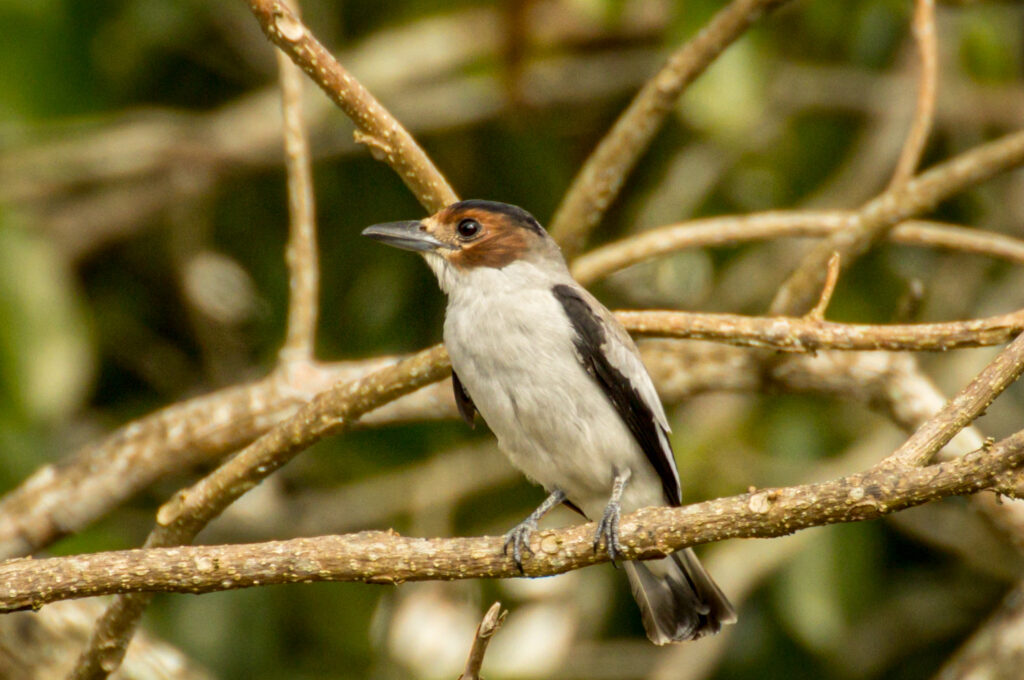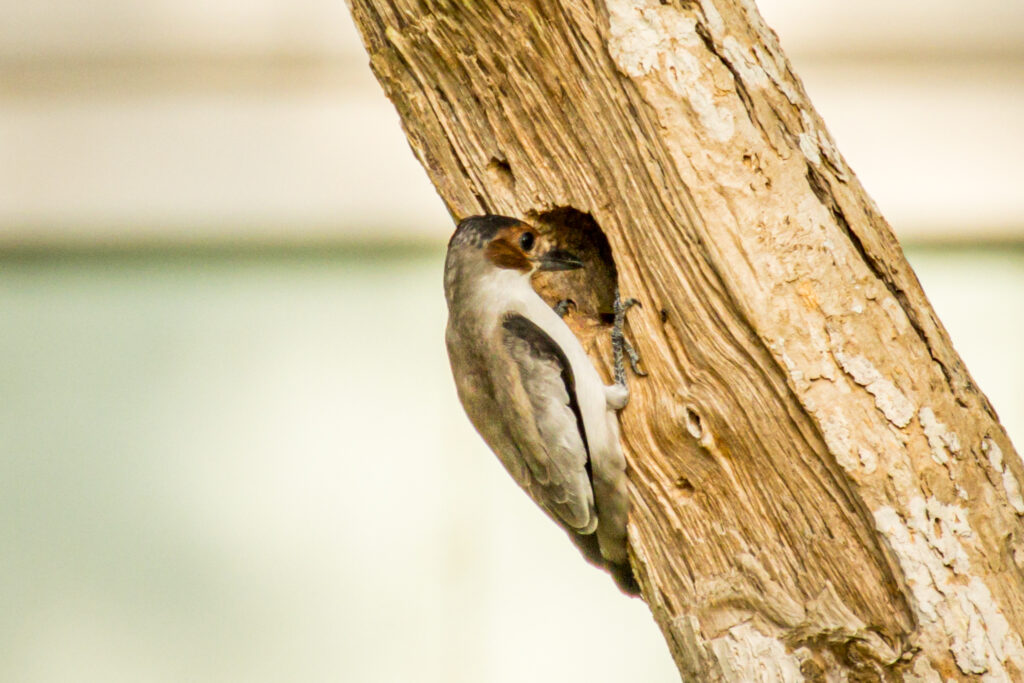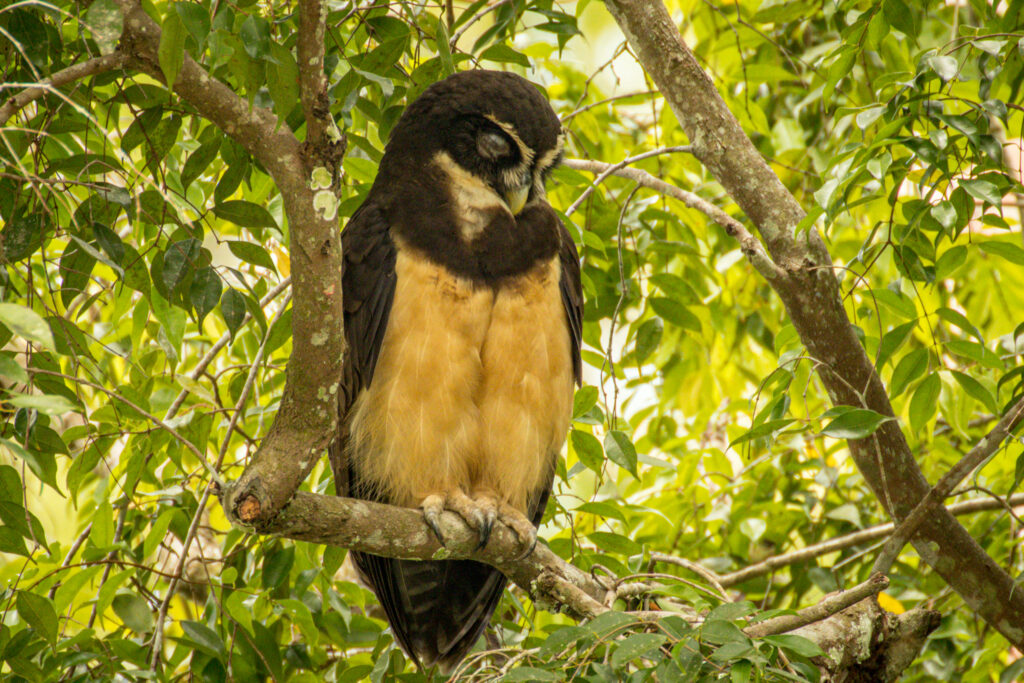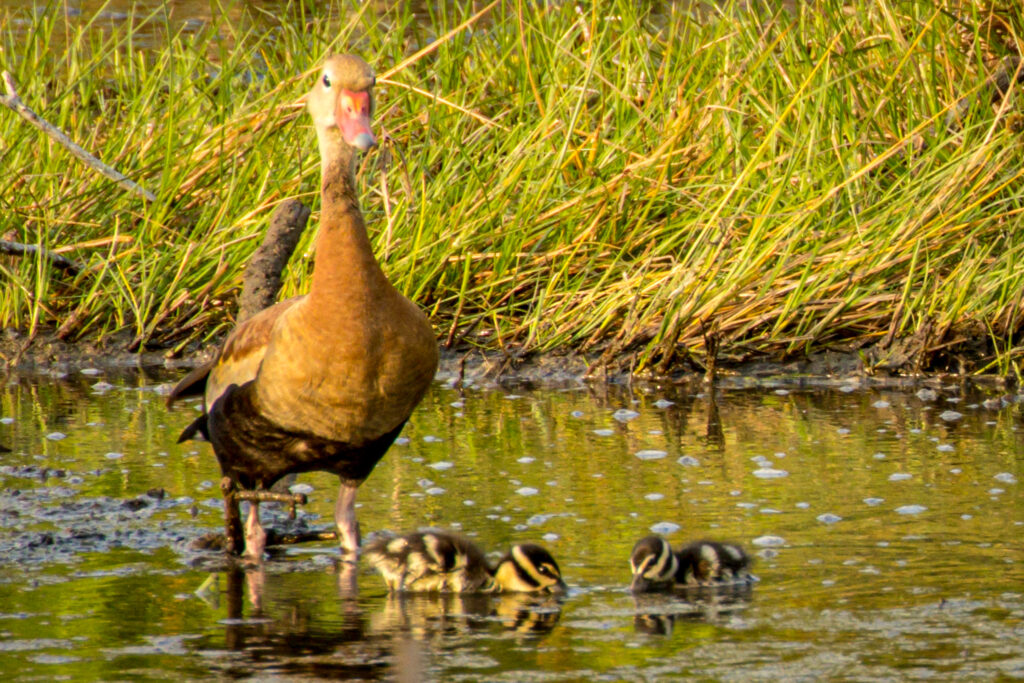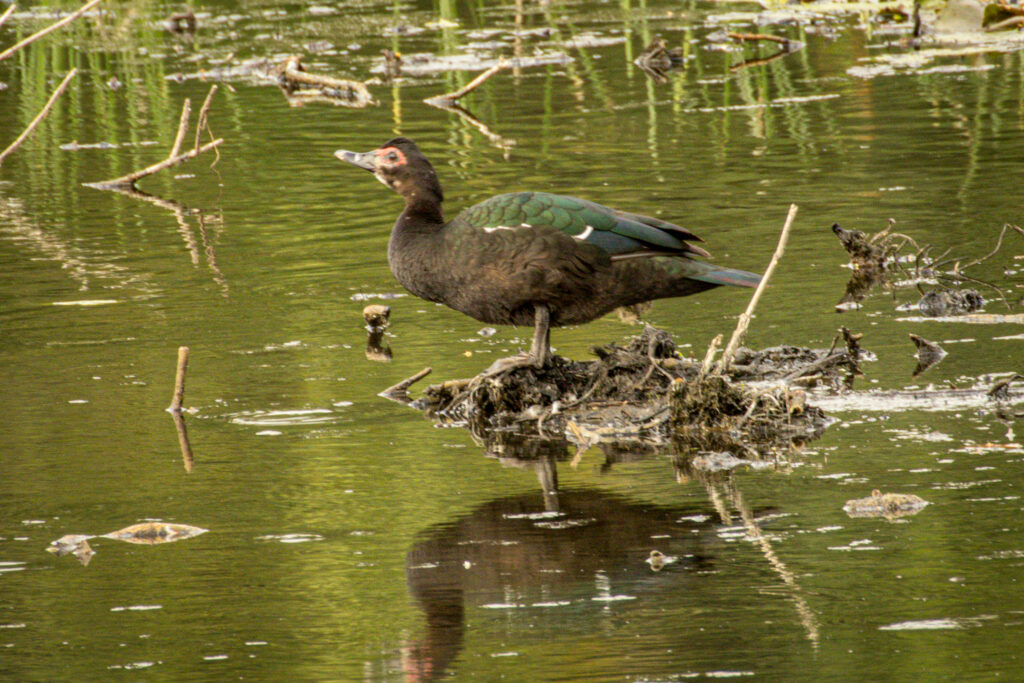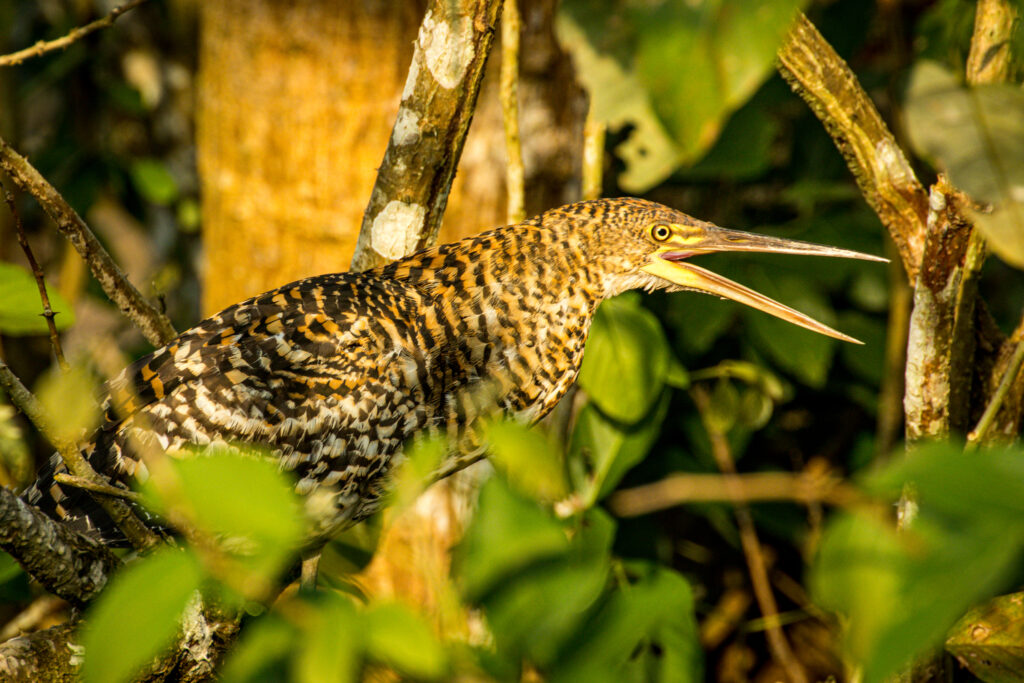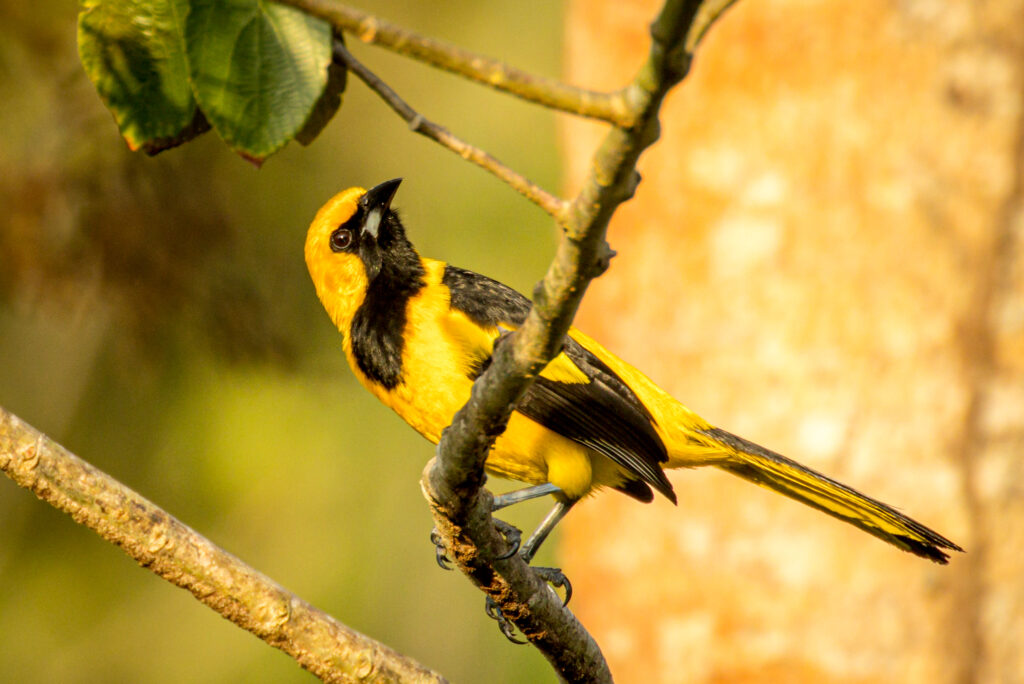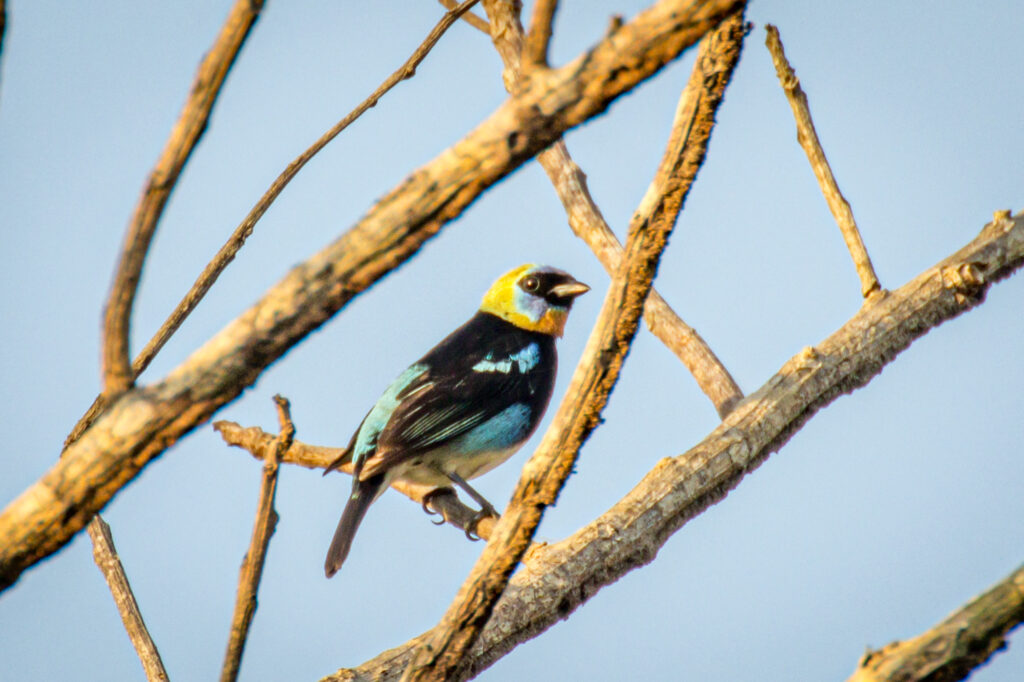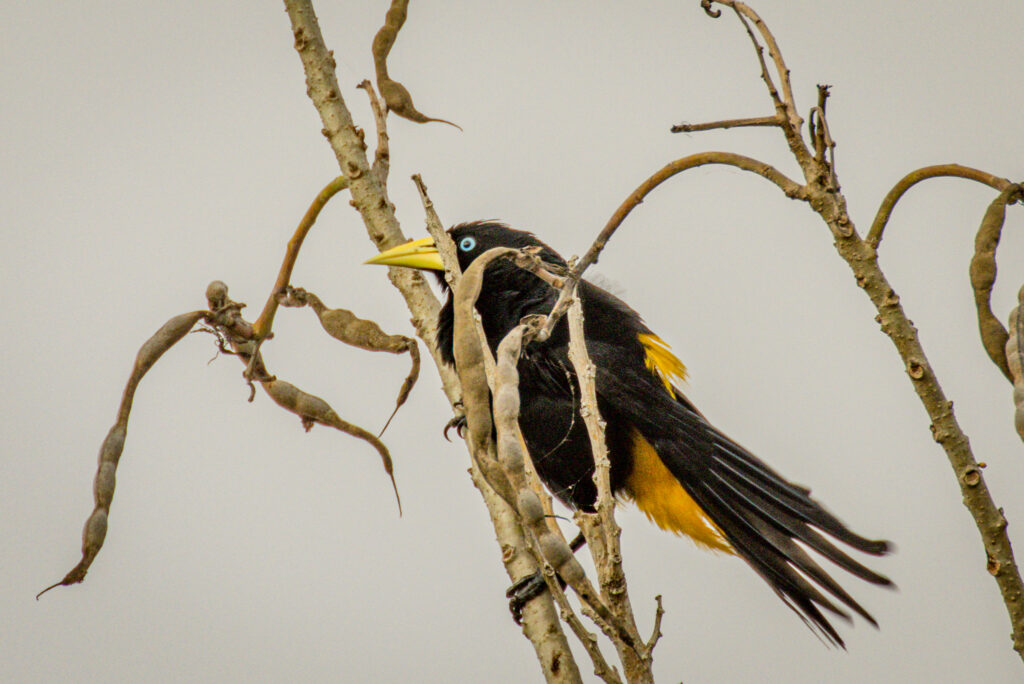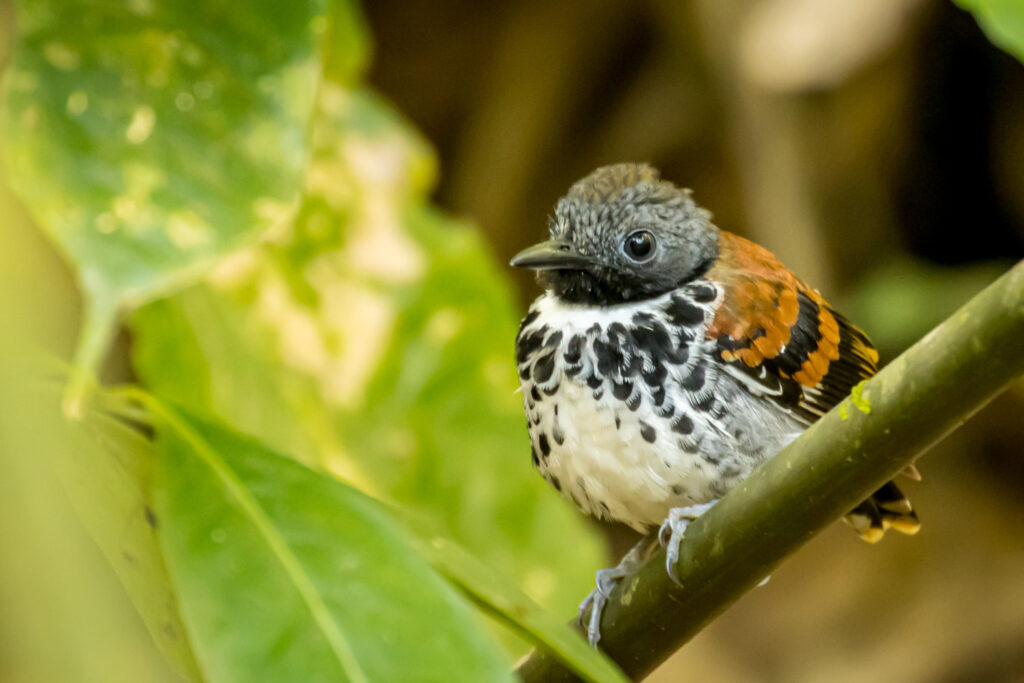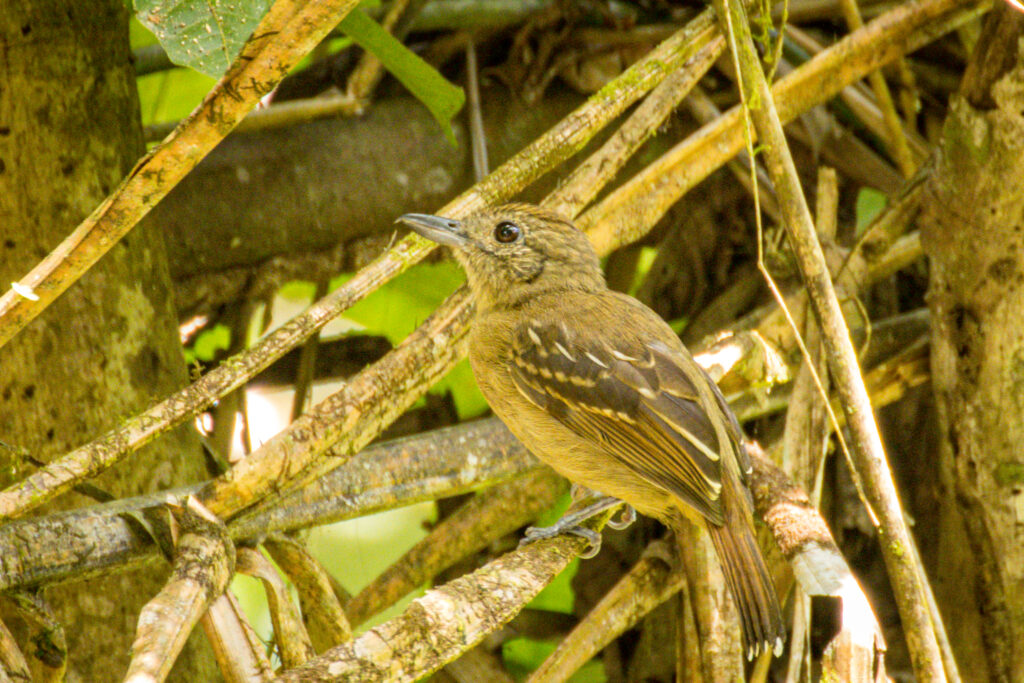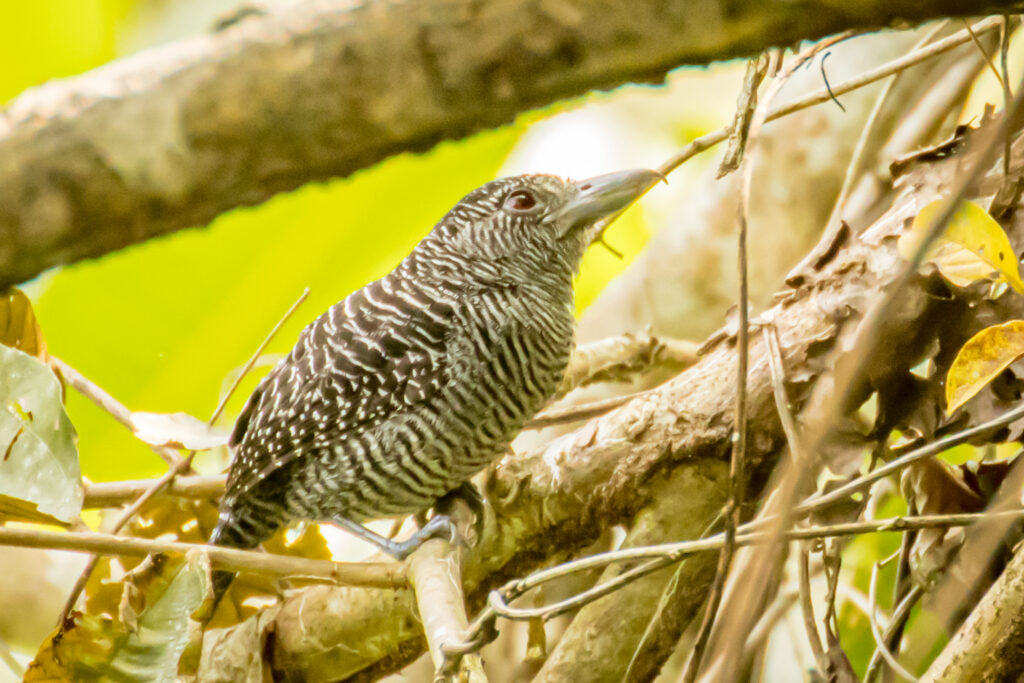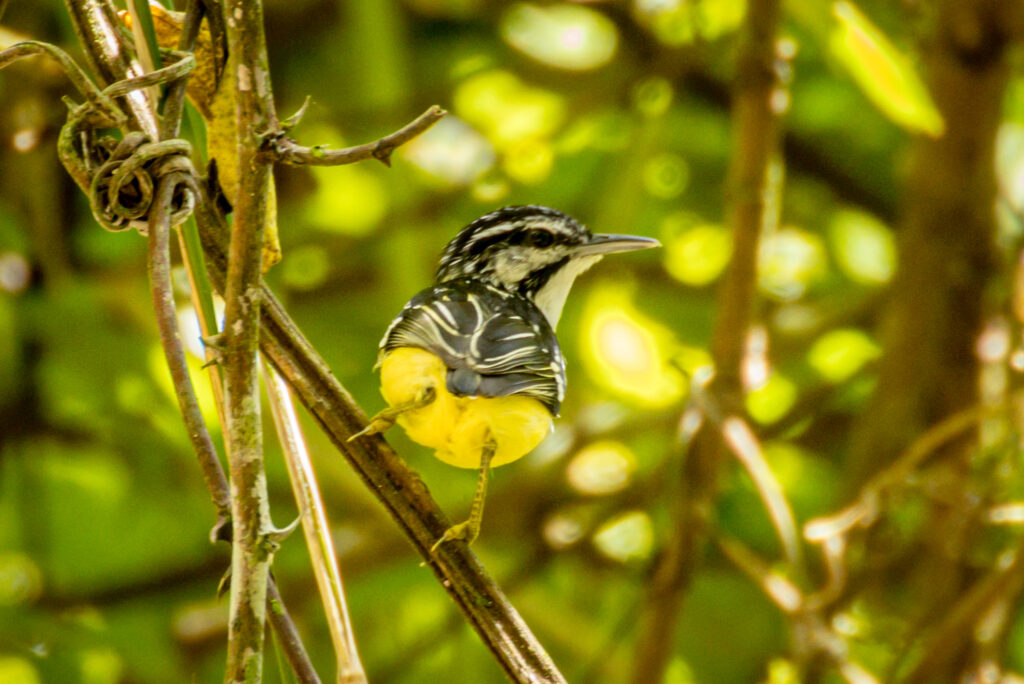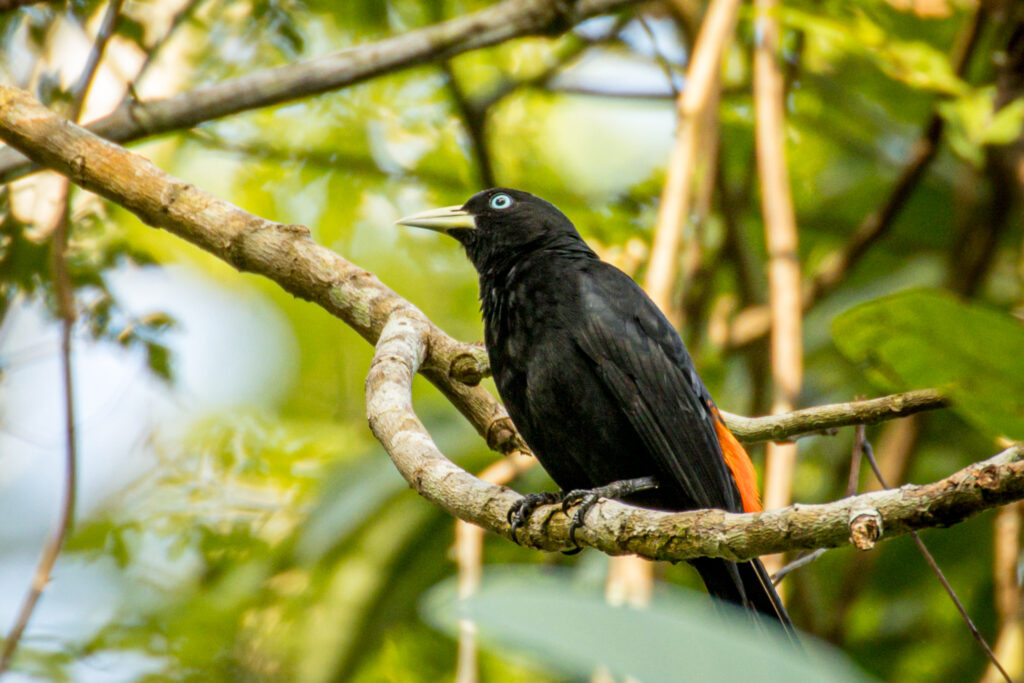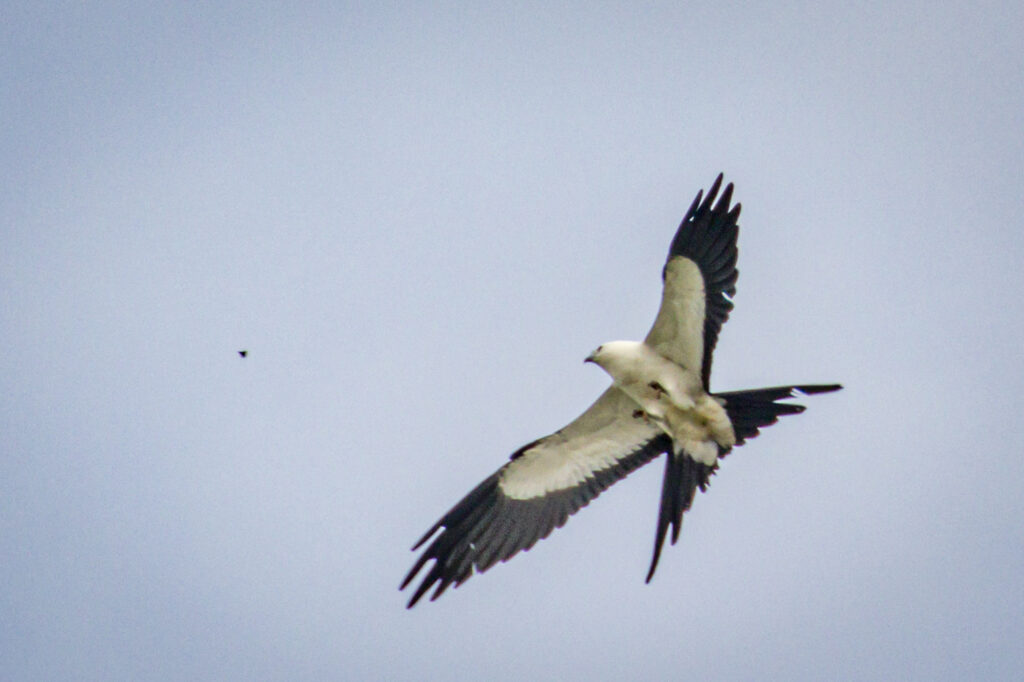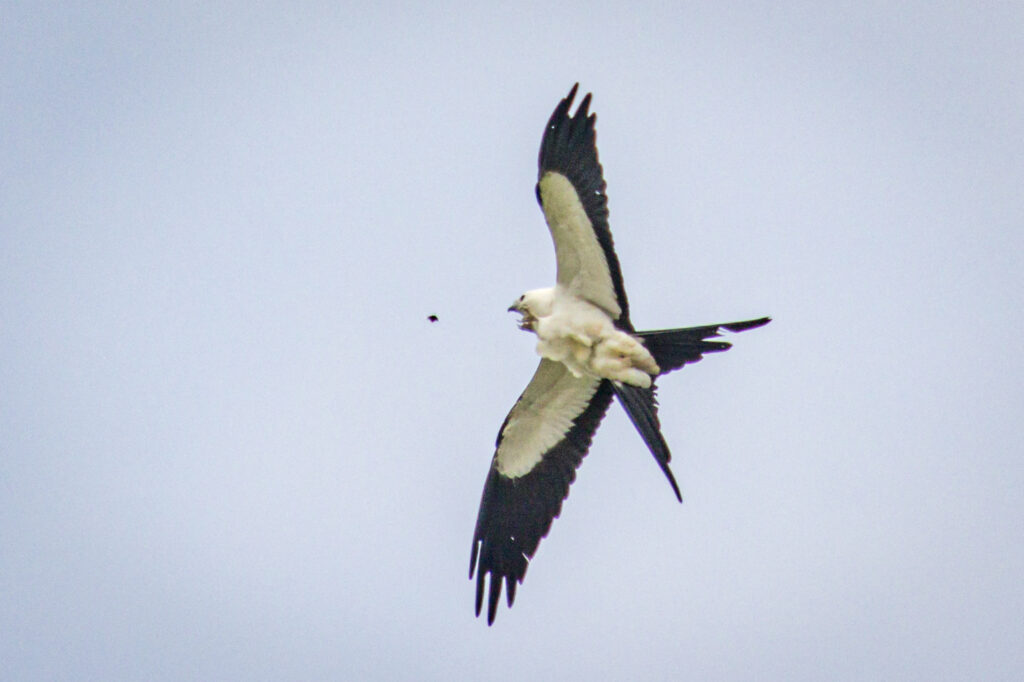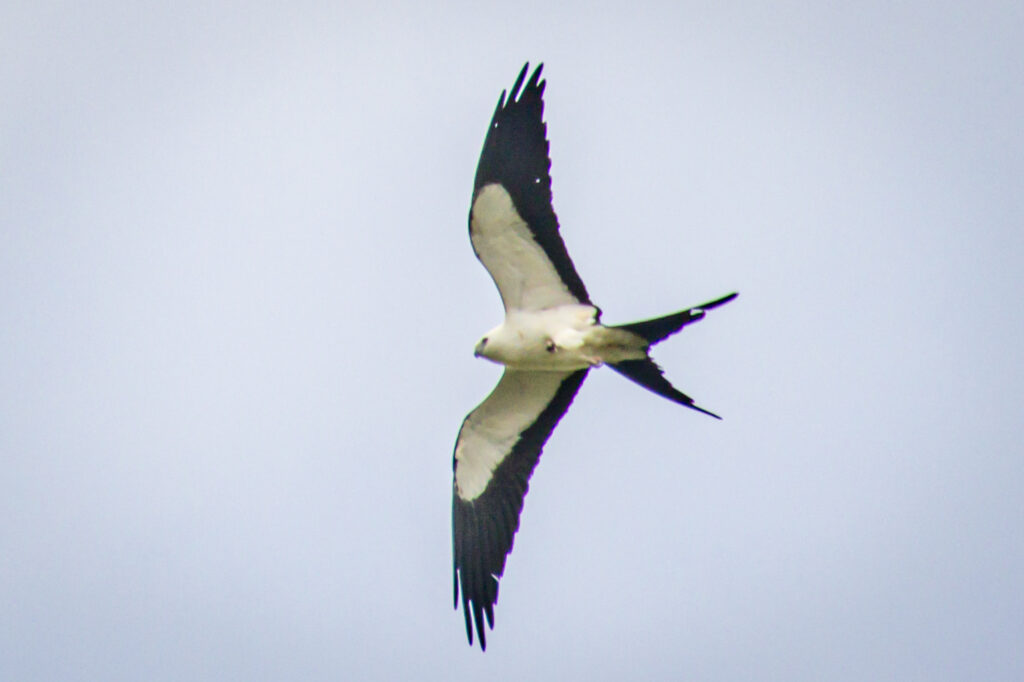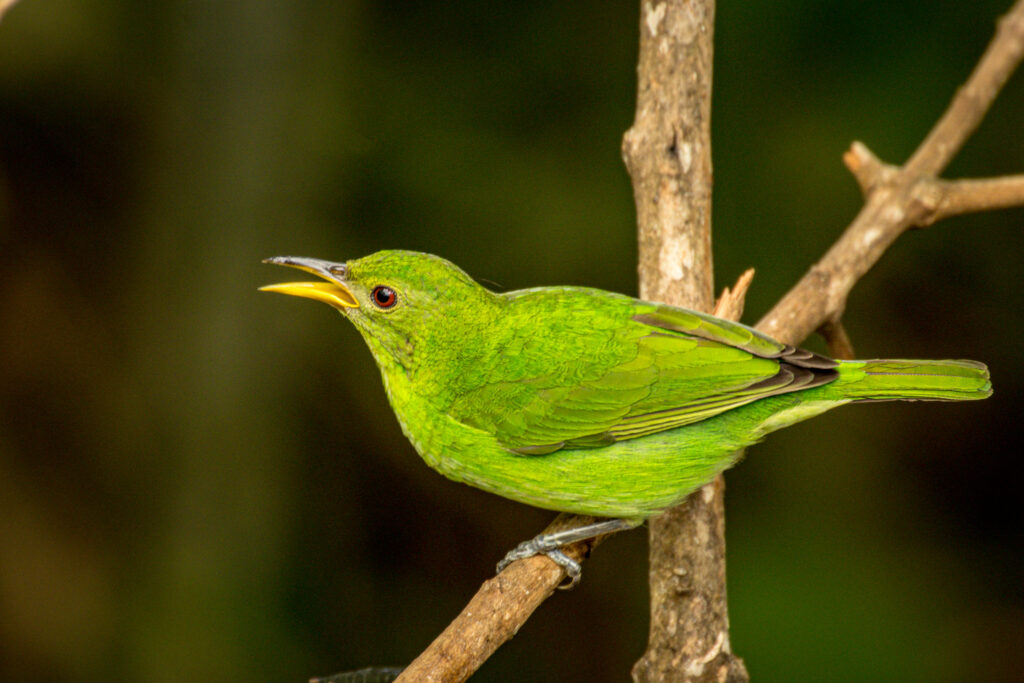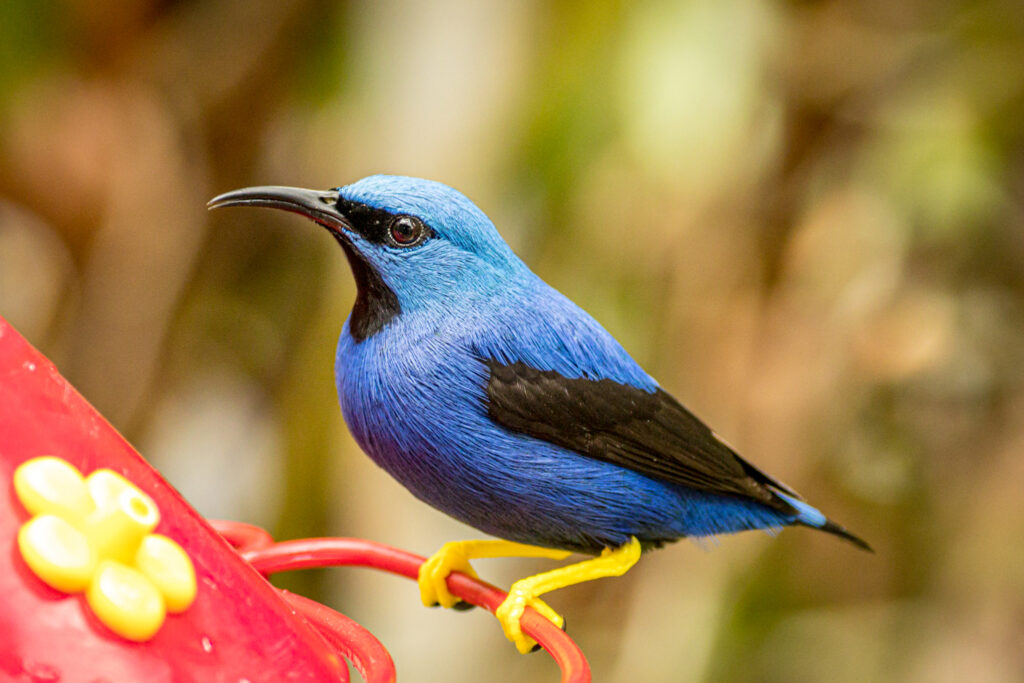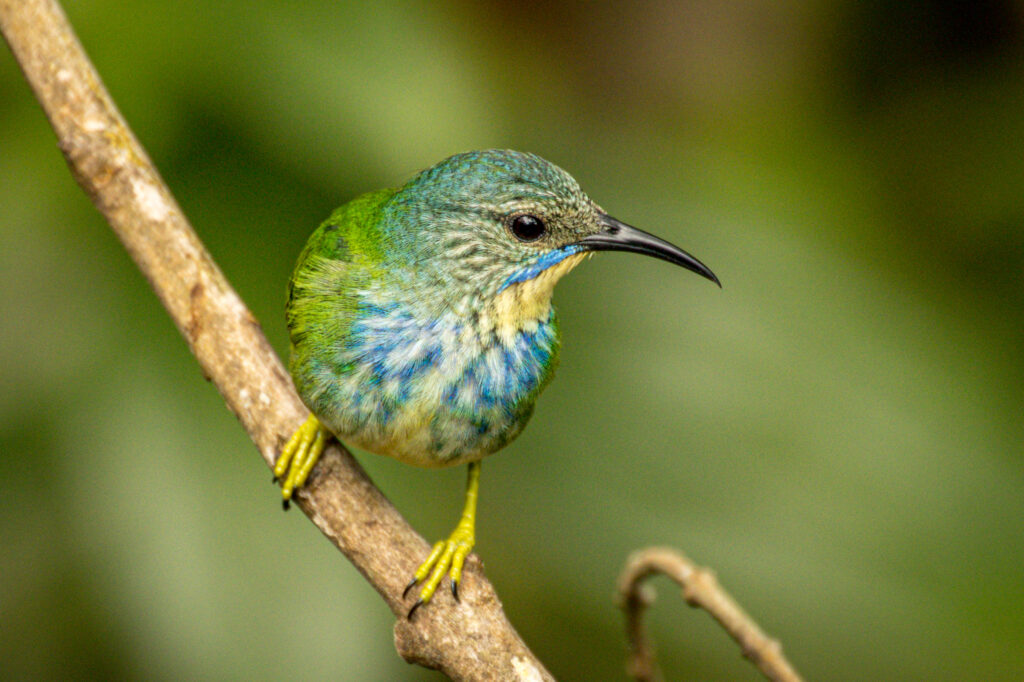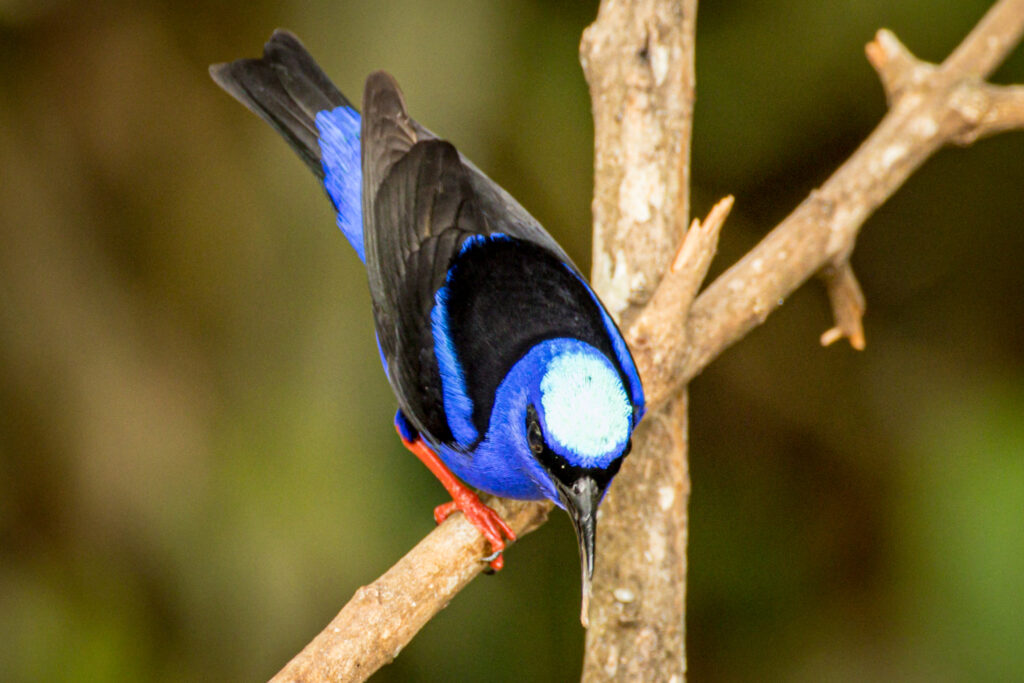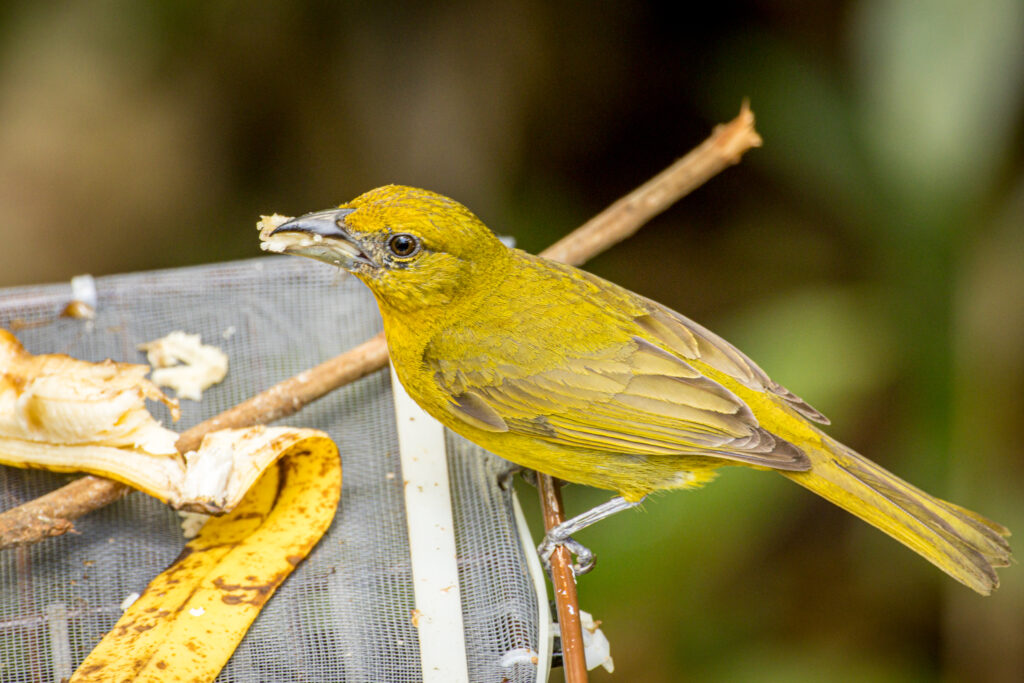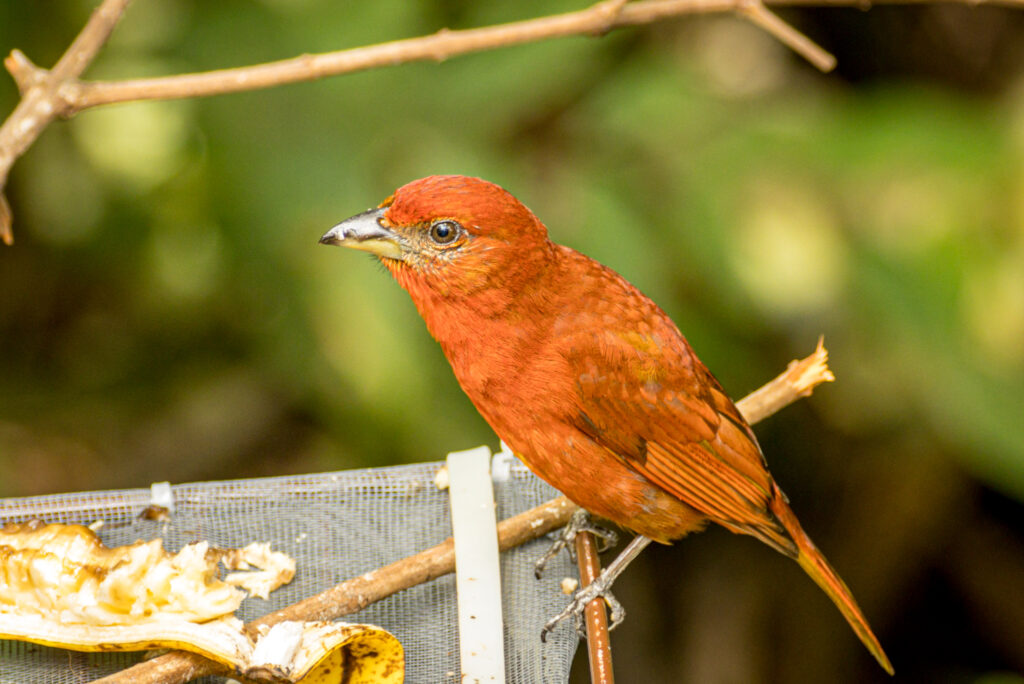This is Part 2 of my Panama Birding Travelogue. If you would like to start with Part 1 Click Here.
After birding at Canopy Lodge we drove down the mountain toward Panama City were we entered Soberania National Park, the location of Canopy Tower. This was the first establishment the Canopy Family created and it took a lot of convincing to allow the Canopy Tower to operate in the middle of a cherished National Park. The facility itself was an abandoned radar tower built by Americans in 1965. It was abandoned many years later and became a target for vandals. Then in 1996 Raul Arias saw the potential of the tower as an Eco-Lodge and he spent the next two years convincing officials to allow him to refurbish the tower. Today it is a mecca for bird-watchers and everyone else who enjoy nature – and great views.
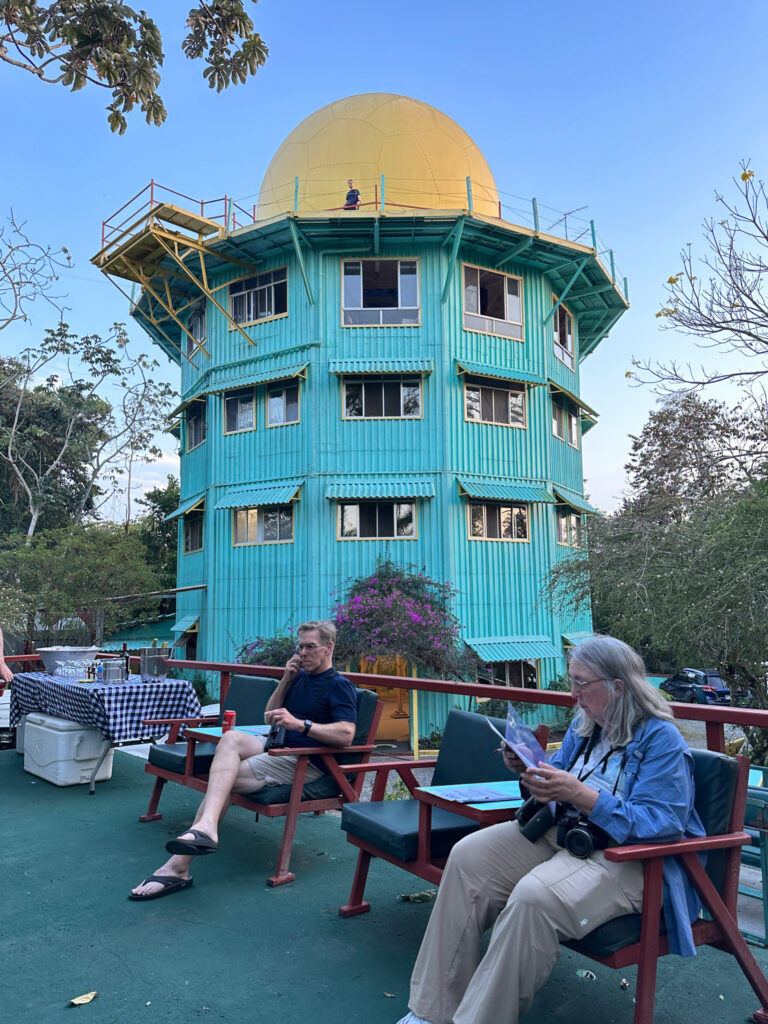
Our room was on the far right side, behind the bottom window. Note the person standing up on the observation deck. From there you can see all the way to Panama City, the Pacific Ocean, the Panama Canal, and a variety of birds, sloths, monkeys, lemurs. Just below the observation deck was the dining area, with great views of animals just beneath the canopy. What a wonderful place!
We usually went up to the observation deck atop the tower at sunrise.
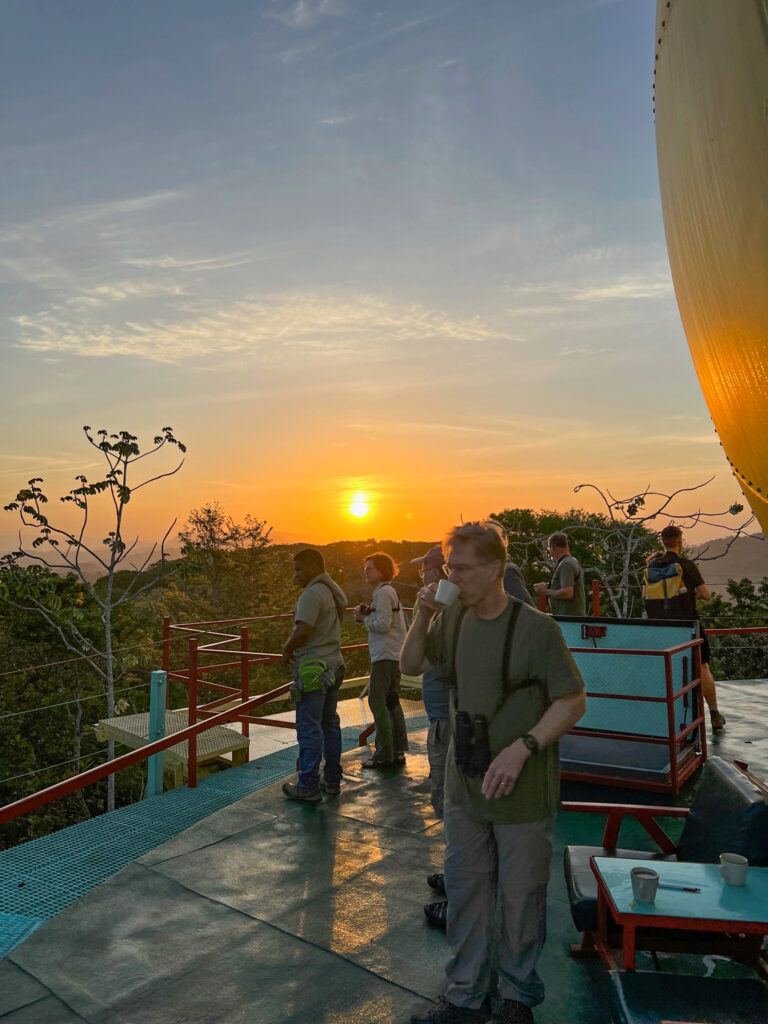
Although this is a post about birding in Panama, we had sightings of some incredible mammals from the top of the Canopy Tower. The first time we went up there a Three-toed Sloth was slowly moving into position for the night. During the night the Sloth stretched out, illuminated by the lights from the dining room. It was still there the next morning at sunrise.
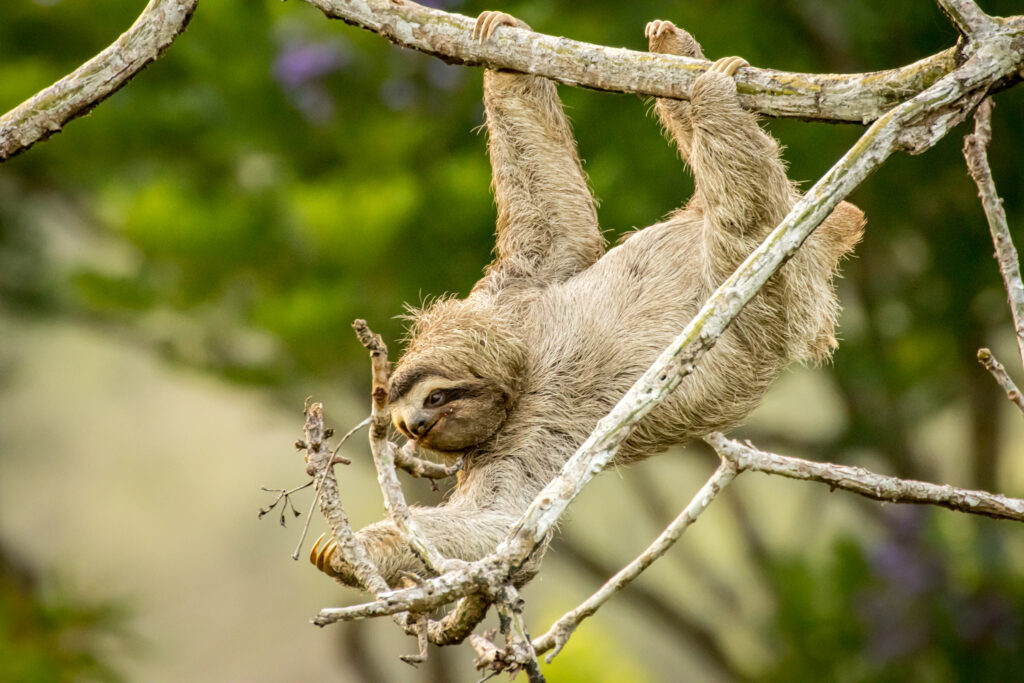

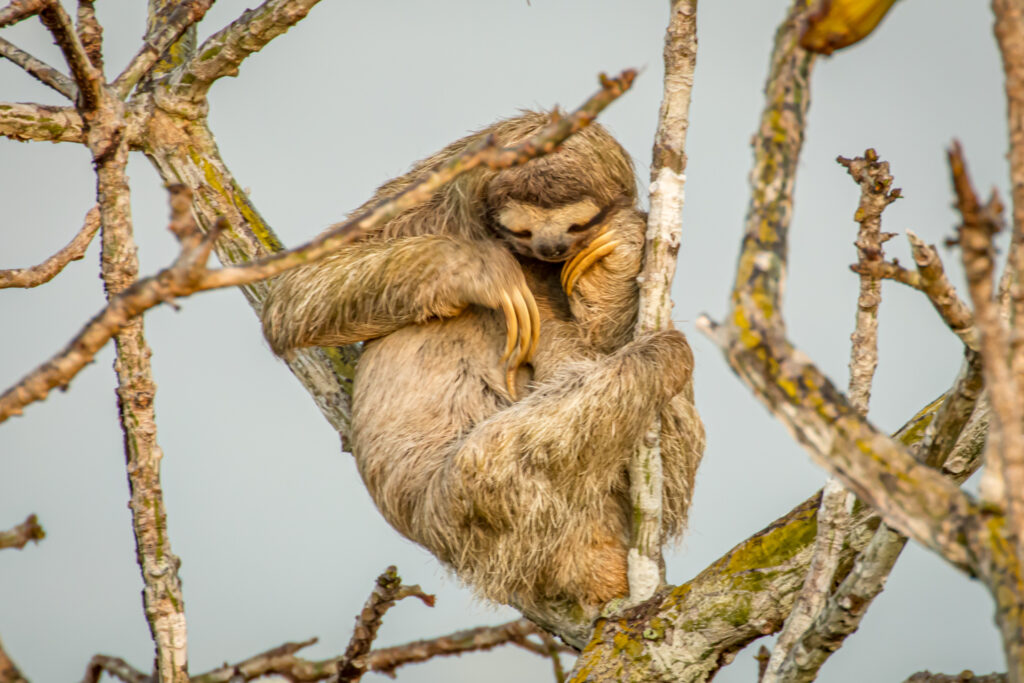
Even though the dining room was situated on the third floor of the tower somebody figured out how to run a clothes line on a pulley to a nearby tree. At night bananas were clipped to the line and then pulled across to the tree where Woolly Opossum, Kinkajous and Geoffrey’s Tamarins would climb up and feed. Here’s a picture of the Wooly Opossum and Kinkajou.
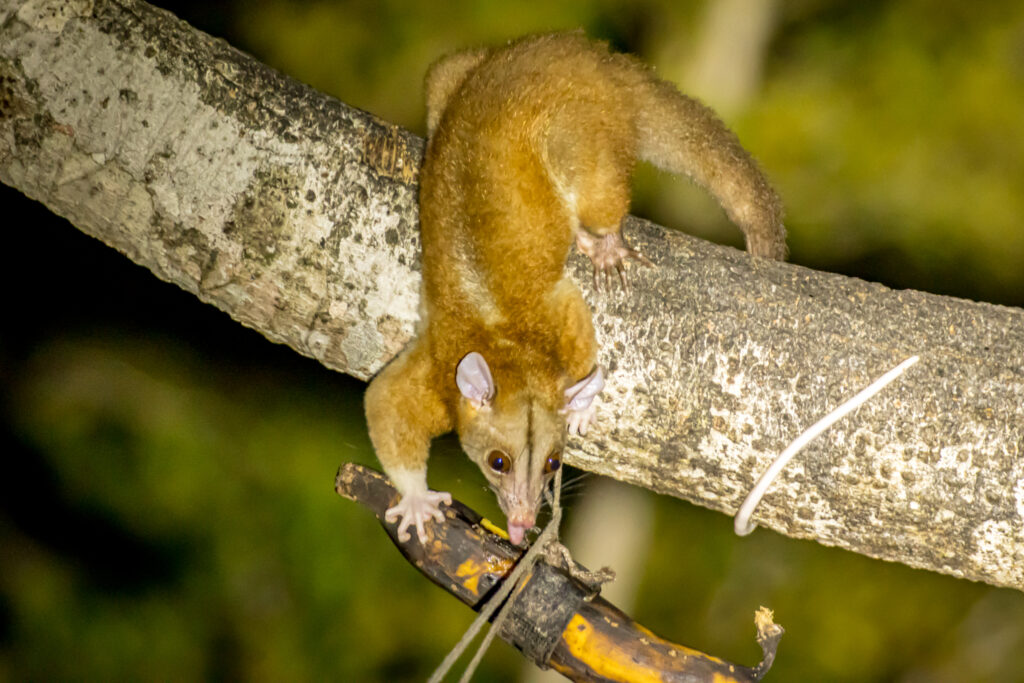
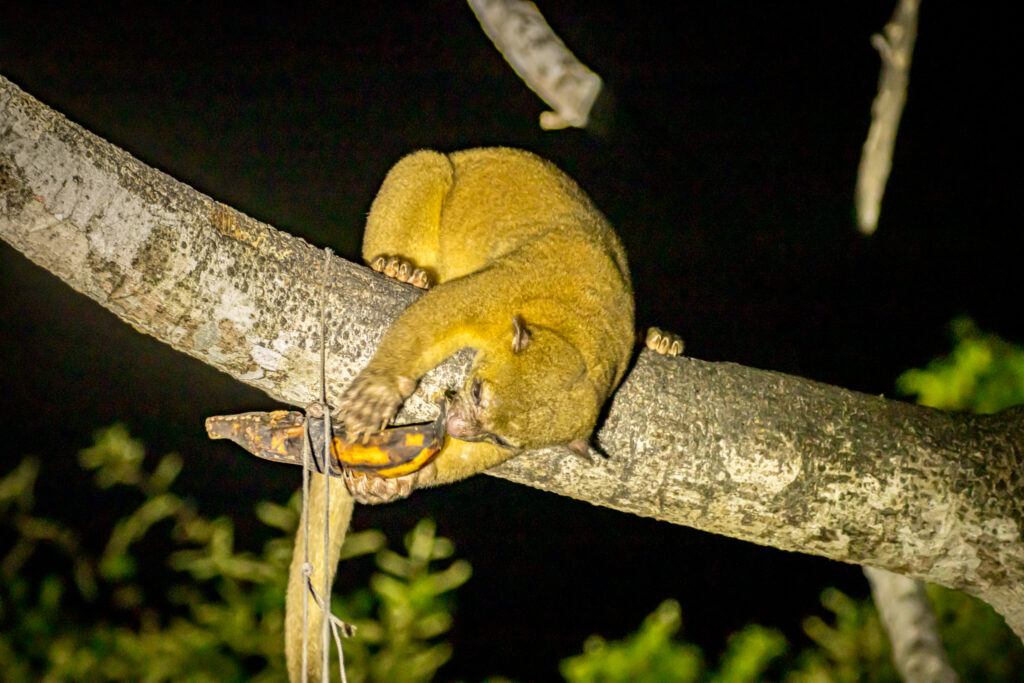
We saw Geoffrey’s Tamarins at the same feeding area in the morning. If you look closely you can see a couple of babies clinging to the backs of their mom.
Just one more mammal pic before I get to the birds. One morning we spotted a small band of Howler Monkeys making their way from tree to tree.
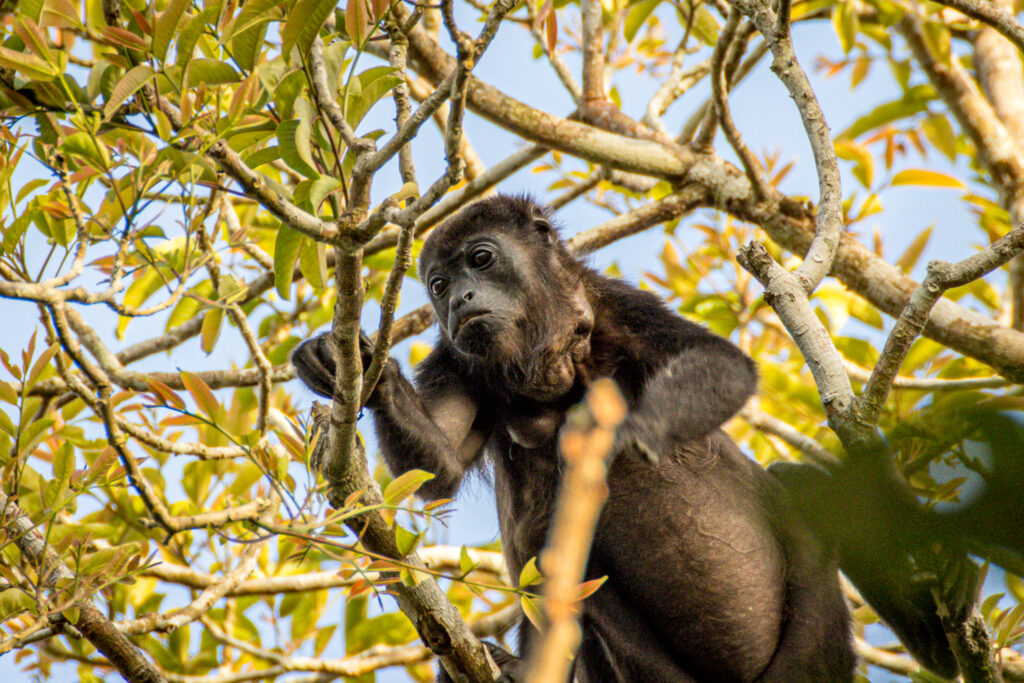
We did see birds from atop the Canopy Tower, too. Off in the distance there was a tree covered with Keel-billed Toucans. One of them flew in a little closer so I could get a better picture.
One of the most interesting sights we saw from the Canopy Tower observation deck was the migration of Broad-winged Hawks. As we scanned the sky over the Panama Canal we saw a never-ending column of them flying north. We estimated that there were over 2,500 hawks in the sky. Here’s a long shot of some of them, and another of one that came in over the observation deck.
Other birds we saw from the observation desk of the Canopy Tower included Palm Tanager, Green Honeycreeper, Cinnamon Woodcreeper, Boat-billed Flycatcher, Blue Cotinga, Masked Tityra, Black-cheeked Woodpecker, and Summer Tanager. If you would like to see pictures of these birds CLICK HERE.
One of the perks of staying at the Canopy Tower was having access to the BIRDMOBILE. Basically a flatbed truck with seats affixed to the bed, we were able to get from place to place and everybody had a front row seat! The first morning at the Canopy Tower we walked down Semaphore Road and then had the BIRDMOBILE come pick us up and take us back to the tower. Here’s what the BIRDMOBILE looks like:
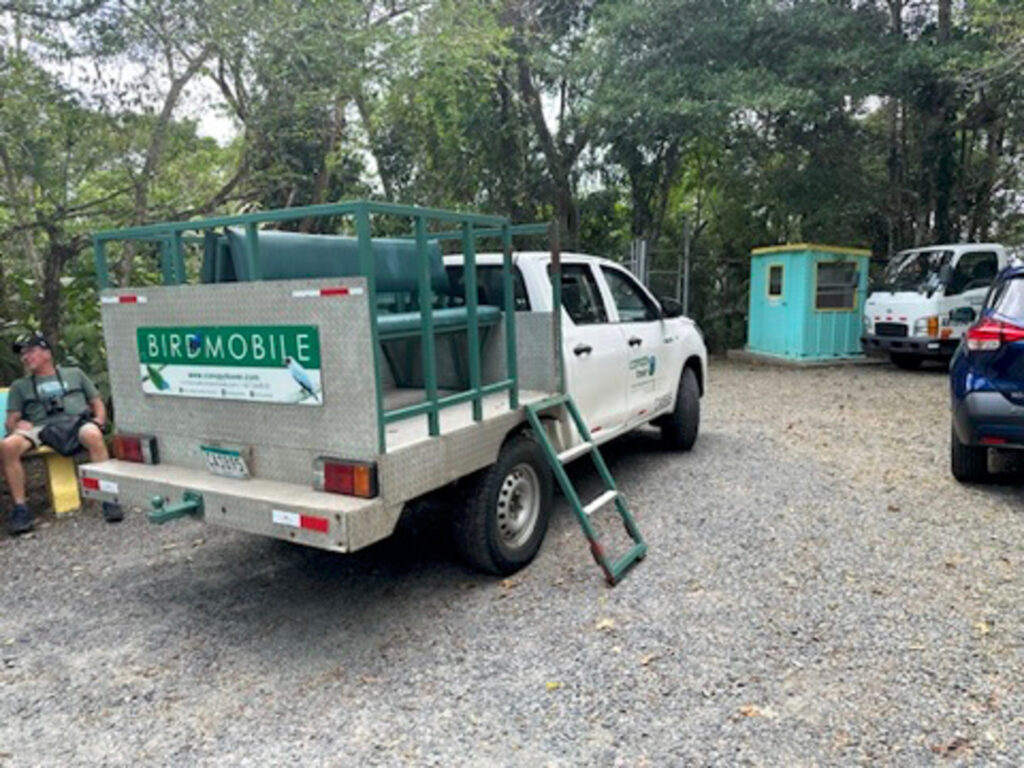
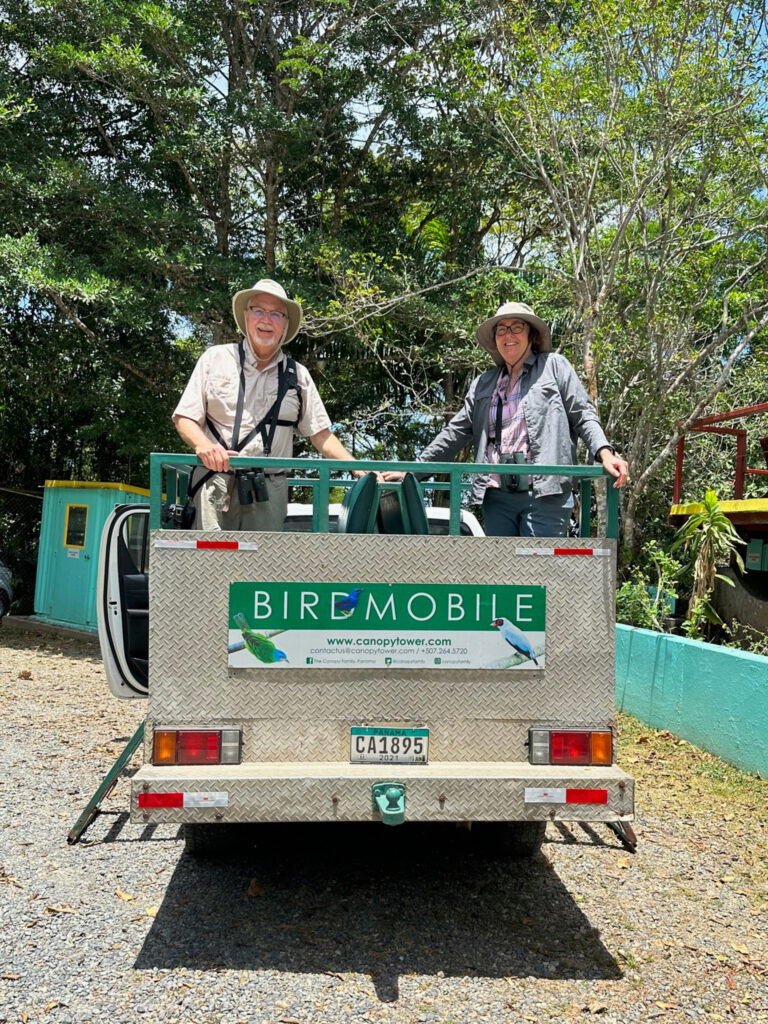
That walk down Semaphore Road was great for new birds. We were now much lower in elevation than we were at the Canopy Lodge so most of the species we saw were different than those we had seen during the first 5 days. It is interesting to note that Semaphore Road was carved out of the side of a steep hill: to one side of the road the rock and vegetation goes straight up and the other side of the road it goes straight down. Most of the birds we saw from the road were on the downside of the road, which meant that if you looked straight out there were a couple of trees but the downslope was so severe there was nothing behind them, creating backlit conditions all the way down. Hence some of the pictures from Semaphore Road were of a lesser-quality.
This Red-Capped Manakin was the first manakin species we saw while in Panama. This one is particularly striking with its bright red head and white eye.
This was not a great look at a Scaled Pigeon, but it was uncommon in this location so I had to include a picture of it.
This White-whiskered Puffbird held still for quite a while. It was beneath the canopy and therefore in shadows so I had to slow my shutter speed down to 1/40th of a second to lower the ISO and noise.
This male Slaty-tailed Trogon was working on a nest inside a nearby termite nest. You can see some the dust from the nest on its bill. If you would like to see more about the Trogon’s nest-building CLICK HERE.
Odd things sometimes pique my interest – in this case the Plain Xenops’ name starts with the letter “X”. Now if I ever do an alphabetical listing of birds I have one for “X”.
One of the more interesting sightings along Semaphore Road was of a pair of Black and White Owls. They were perched fairly high alongside the road but didn’t move while we were there. If you would like to read and see more pictures of Panama owls CLICK HERE.
One afternoon the BIRDMOBILE took us down to the nearby town of Cólon where the Canopy Family operates a Bed and Breakfast. The town is located at sea level and is situated fairly close to the Panama Canal. The B&B has several feeders in its backyard so we watched a variety of birds come in to feed.
One of the brightest birds we saw in Panama was the Blue Dacnis. The color couldn’t have been more striking on this male.
Quite the opposite in coloration, the dull gray Variable Seedeater also came in for – wait for it – seeds.
One bird seen there at sea level that we also saw at the upper elevations around the Canopy Lodge was the Crimson-backed Tanager. It was as brilliantly red as the Dacnis was blue.
We were about to move on when we noticed a pair of Black-crowned Tityra working on a nest inside a tree right along the street that passed in front of the B&B. The male has the pitch-black crown whereas the female has some brown on the face.
Right across the street from the B&B a Spectacled Owl sat in plain sight on its daytime roost.
We hopped back on the BIRDMOBILE and traveled to the Ammo Dump Ponds. Recall that this is all near the Panama Canal and at one time the Americans operated the canal – and protected it. We arrived at the pond and it was adjacent to an area enclosed by a chain-linked fence. We saw a couple of small buildings within the enclosure and didn’t think much about it until an armed guard came out and told us to stay away from the fence. We had unwittingly brushed against the fence which must have had a motion sensor built into it – pretty good security for whatever was kept in there.
The pond itself was teeming with waterfowl. We all got a kick out of seeing Black-bellied Whistling Ducks with some newly hatched chicks.
Not far from the chicks was a large Cayman laying in wait.
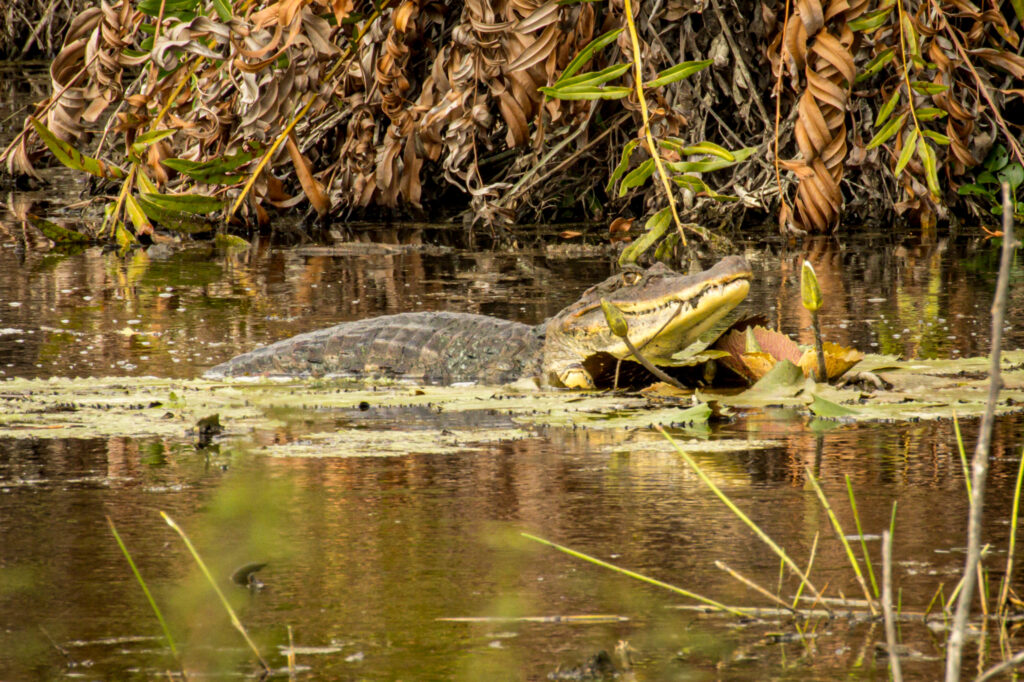
In the states most Muscovy Ducks are domesticated and therefore not eligible for inclusion on an eBird checklist. Here in central Panama Muscovy Ducks are native to the area.
One of the more spectacular birds we saw was a Rufescent Tiger-Heron. This immature bird walked right in front of us as it made its way from the pond to a nearby stand of trees. You can see why it’s called “tiger” from the pattern of its feathers.
We noticed quite a few birds in that stand of trees. One of the most striking was the Yellow-tailed Oriole.
Equally striking was a Golden-hooded Tanager (also seen at higher elevations).
Partially obscured by its perch, the Yellow-rumped Cacique still stood out as one of the more colorful birds there.
On the other end of the colorful spectrum a Thick-billed Seed-Finch was seen foraging – look at the size of its bill!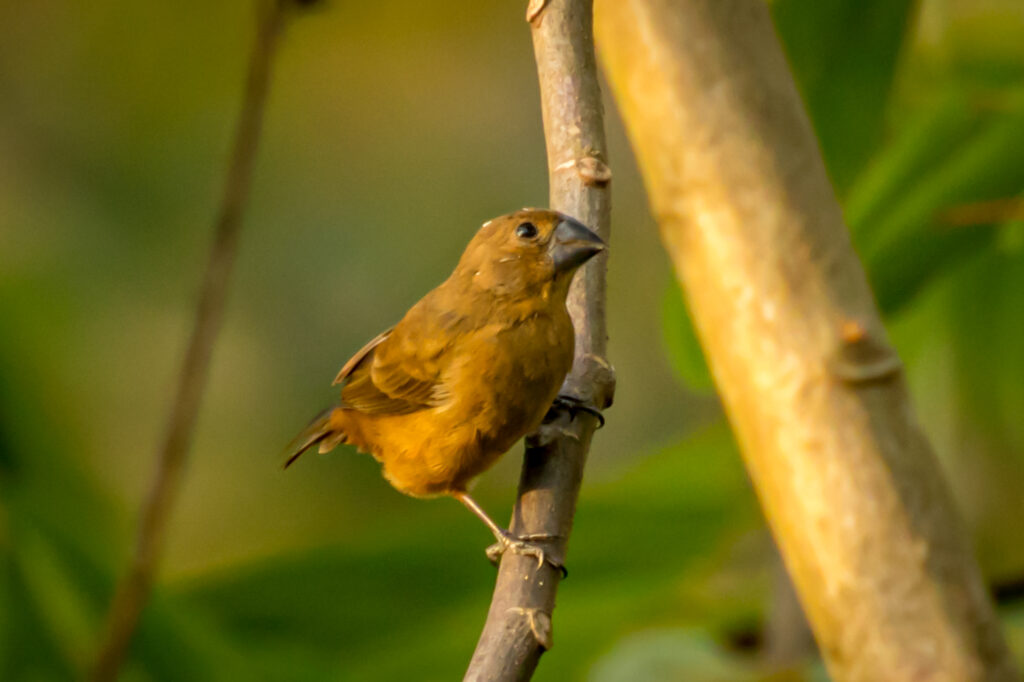
As we started back to the BIRDMOBILE a small family of Capybara crossed in front of the gate. Hope they didn’t touch it or they’ll get yelled at!
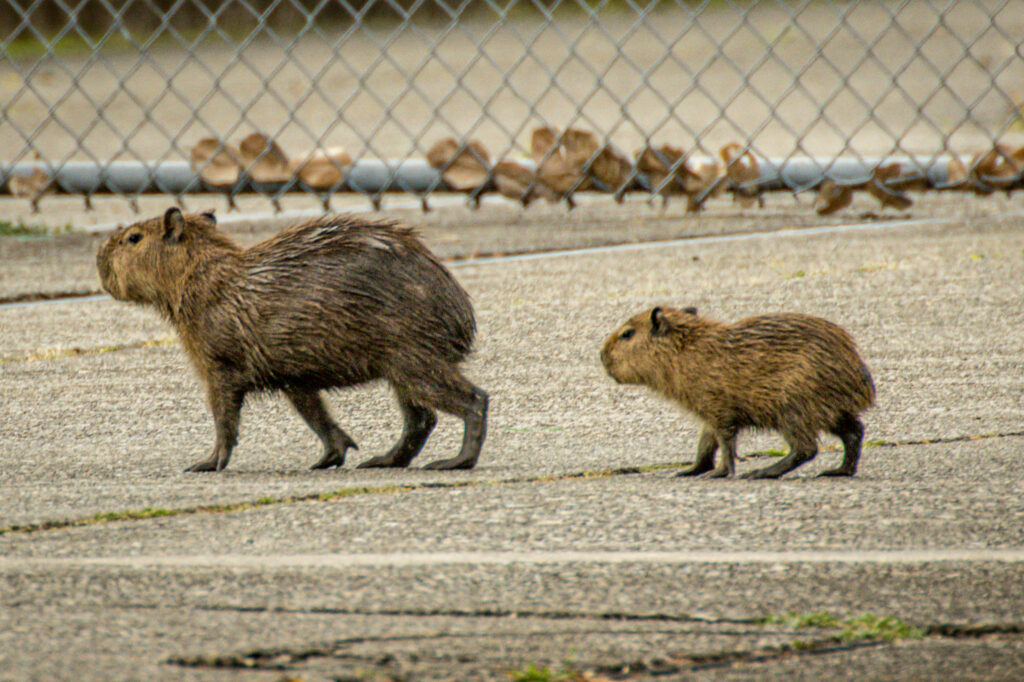
One of the well-known birding areas in this region of Panama is Pipeline Road. Built years ago right through the dense tropical forest, Pipeline Road gives birders access to a wide variety of species that tend to live underneath the canopy. On the ground many small ants traverse the old road, which makes for easy pickings for foraging birds. As our guide Adam explained, some birds feed on ants almost exclusively and other species take advantage of ants when they are present but eat other insects as well. Invariably both types of birds have the word “ant” somewhere in their name.
One of the first birds we saw after getting off the BIRDMOBILE was a Spotted Antbird. Adam picked up on its call and quickly located it. We had some brief looks at it and the group started to move on. I asked Adam if I could stay back and try to get a picture of it – not only did he allow me to stay back, he called in the bird (audio recording). I was able to get some great shots of this beautiful bird, which became one of my Panama favorites.
A little farther down Pipeline Road we came upon a Black-crowned Antshrike. Not as flamboyant as the Spotted Antbird, it had an interesting coloration.
This Fasciated Antshrike has thicker build than most other ant birds.
This pretty little Mustached Antwren was more colorful than the most of the other ant loving birds we saw.
Not an ant bird but the Scarlet-rumped Cacique was a strikingly jet-black bird with bright red feathers down its back. Complete the look with a pale yellow beak and blue eye ring, this bird took the prize for most striking.
Swallow-tailed Kites were overhead frequently and easily seen when we were in open areas. Below is a series of three photos showing one tracking a flying insect (see the black dot on the left) and then moving in to actually grasp the prey in its claws mid-flight. If you look carefully at the last picture you can see the insect within its claws.
One evening we took the BIRDMOBILE down Semaphore Road in search of birds and animals. Adam had an infrared spotter so he could peer into the black jungle and make out the shape of any animals there. Once found, he would then use a flashlight to illuminate that animal for us. As already described we did see a Spectacled Owl right off the road.
Perhaps just as interesting as the owl, we saw five Porcupines up in the trees. Below are two of them and if you look closely at the first one you can see a baby rolled up in the belly of its mom.
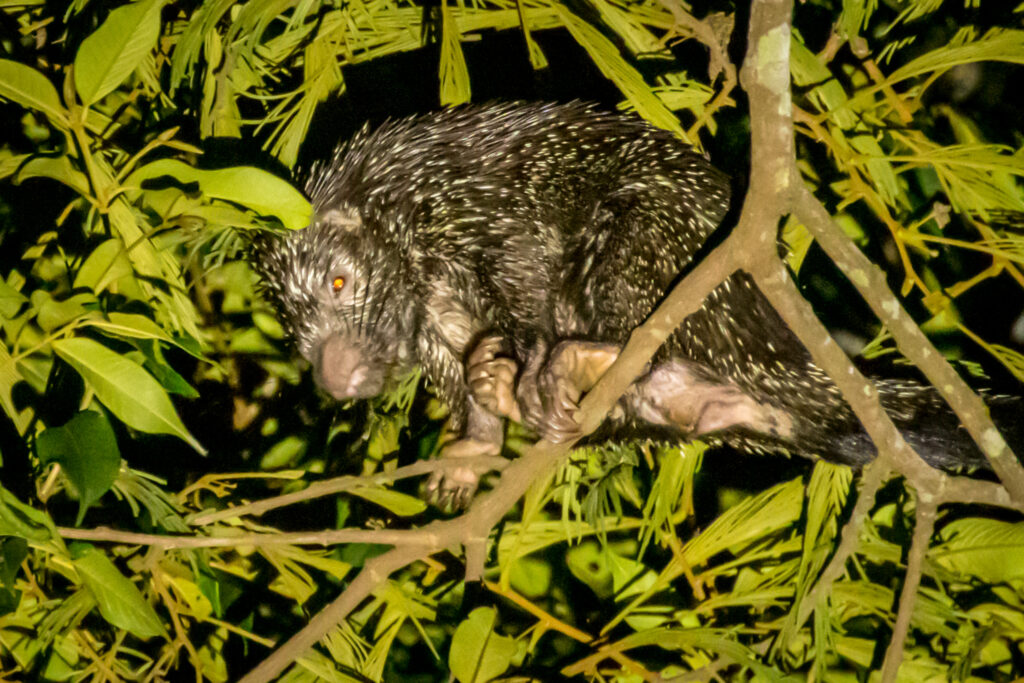
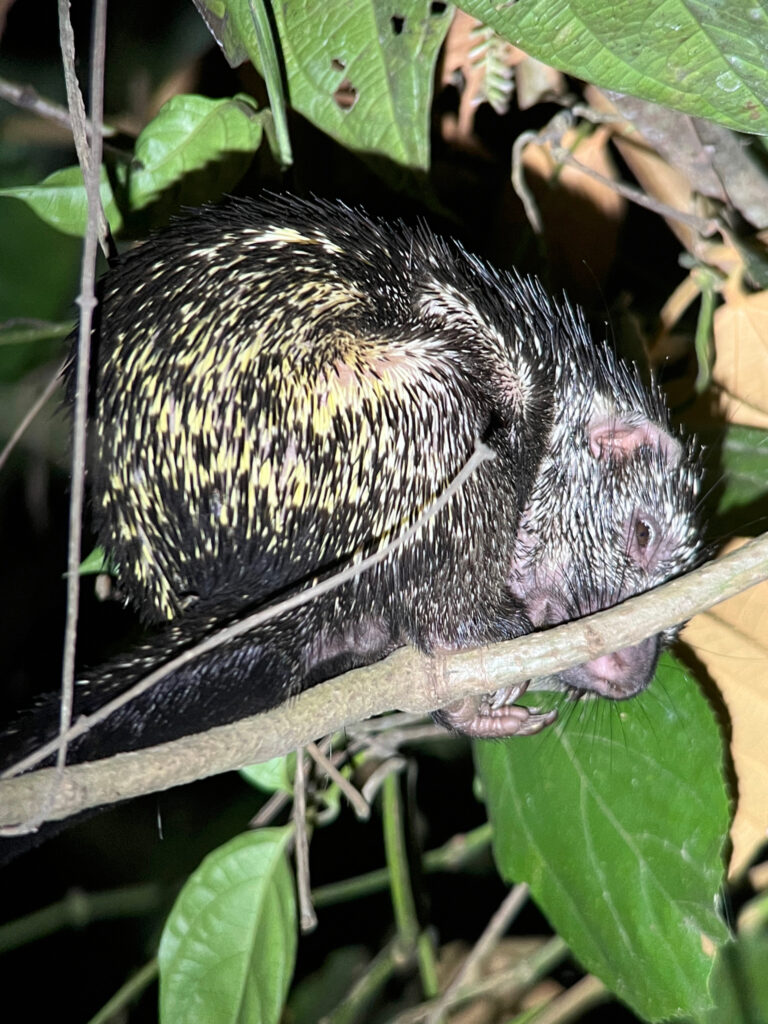
One afternoon we went to Jerry and Linda’s house for lunch and feeder watching. Jerry and Linda are Americans who moved from Florida to Panama and set up about 30 feeders in their backyard. Jerry told me that he purchases one ton of rice and two tons of bananas every year to keep the feeders filled. Red Hill Birding guests (and probably other birding groups) get to enjoy the shade of their patio while eating lunch and watching birds at close range. Here were some of the birds we saw:
This Green Honeycreeper was a favorite when it visited Jerry and Linda’s feeders.
The male Shiny Honeycreeper came in to feed on one of the hummingbird feeders. It is one of the most beautiful birds I’ve seen. Except for the female…
Although the male Shining Honeycreeper is strikingly beautiful, the female’s soft pastel colors are simply gorgeous! Which one do you like better?
While dining on the roof of Jerry and Linda’s patio we were able to look down on some of the birds who were perched above the feeders. This unusual view of a Red-legged Honeycreeper shows a white cap.
Just two more pics before we move on and bid adieu to Jerry and Linda’s house. Taken from the roof of their patio I was able to capture a pic of a female Hepatic Tanager coming in to feed on a banana. The male came in next.
Here is the male Hepatic Tanager coming in to the exact same spot the female was just at to feed on the same banana.
One afternoon we went down to the Mirador Locks of the Panama Canal. We watched a freighter leaving the locks and a cruise ship approaching the locks from the other side. Here’s a picture of the canal from the Canopy Tower observation deck along with two pictures of the freighter leaving the locks.
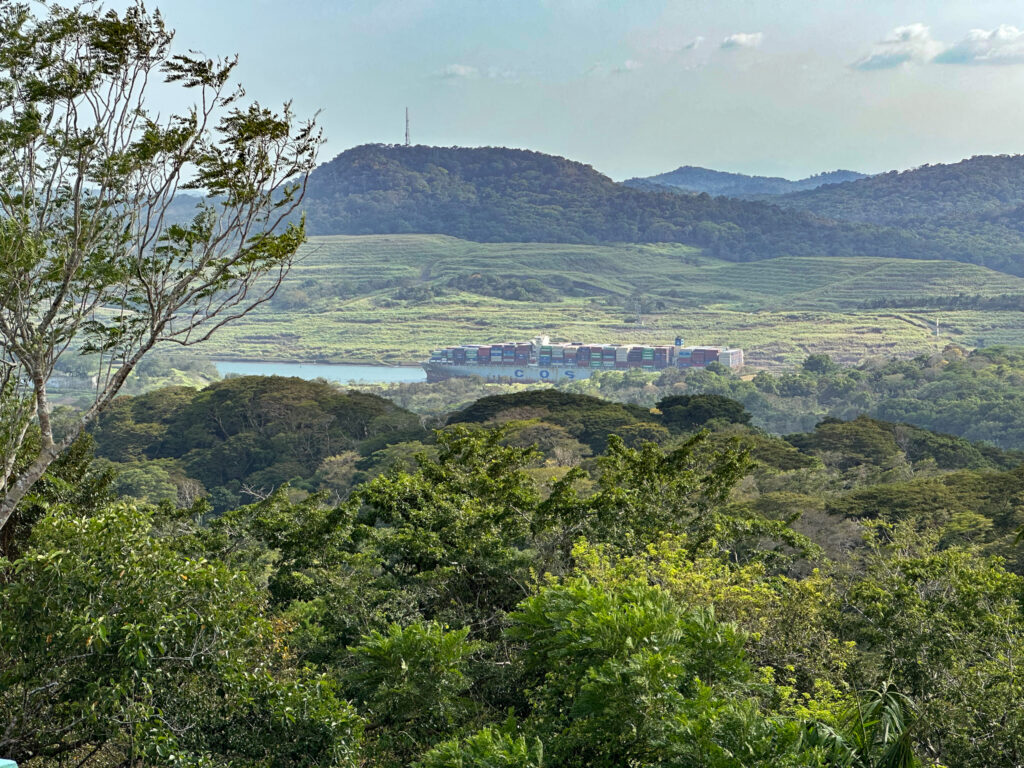
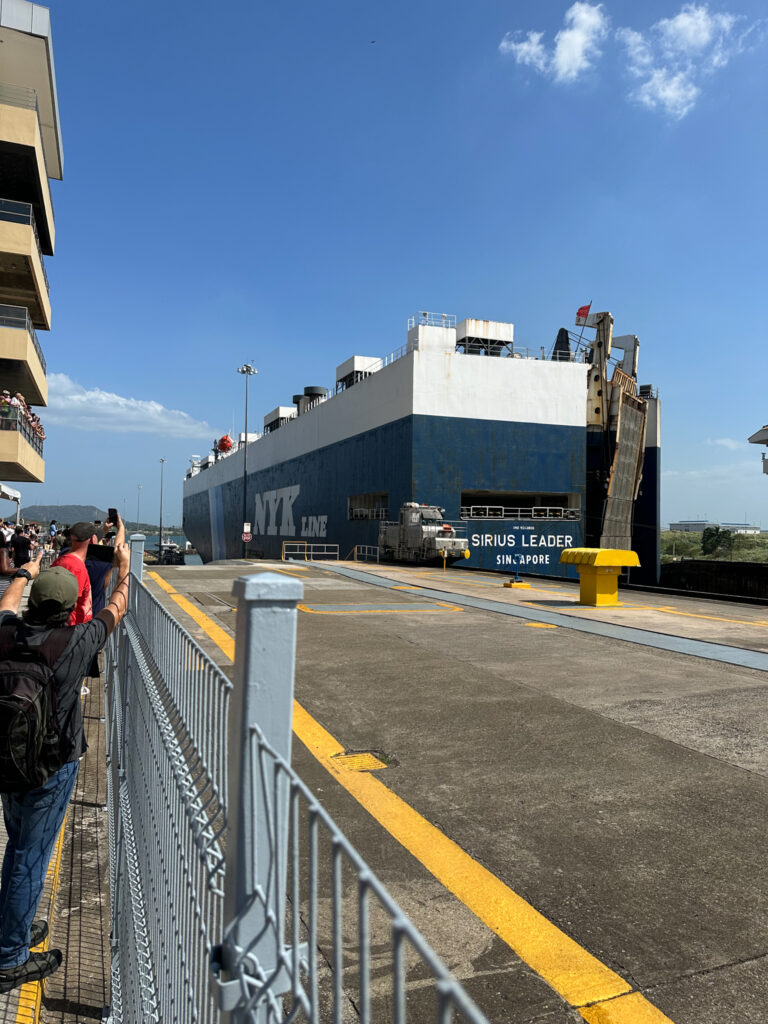
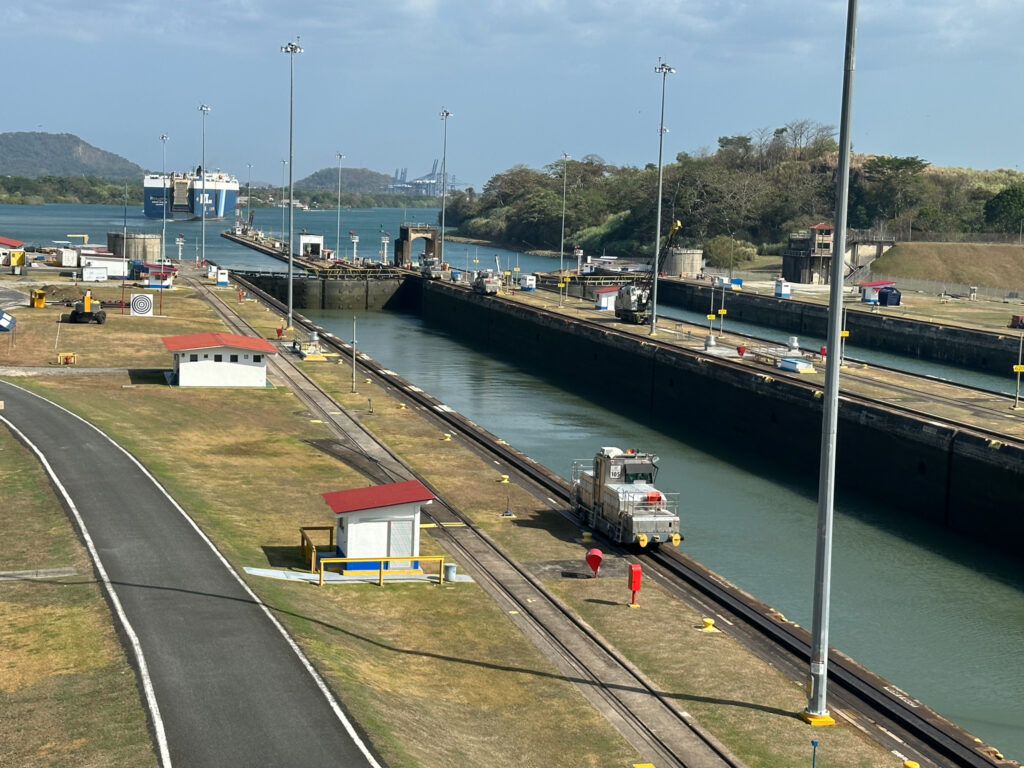
On our last day, our flight home didn’t leave until the afternoon so Adam was kind enough to take us out to one more location-Summit Pond. This post has become waaaay to long so if you would like to see pictures of the Collared Forest Falcon, Black-striped Woodcreeper, Green Heron, Yellow-faced Grassquit, Bat Falcon, and a White-shouldered Tanager seen at Summit Pond CLICK HERE.
It was an absolutely wonderful birding trip! The Red Hill Birding guide Adam was so fun to be with in addition to his expertise as a birder. His constant companion and local guide Carlos was so knowledgeable and helpful, too. The Canopy Family staff were perfect hosts and went out of their way to make sure we had an excellent birding experience. I would definitely recommend going to Panama, staying with the Canopy Family at one or more of their facilities, and seeing lots of great birds and mammals.
This is the end of Part 2 of my Panama Birding Travelogue. I created several different pages with pictures and descriptions of the birds we saw there to compliment Part 1 and Part 2. If you would like to see a list of those pages (with links to them) CLICK HERE.
If you enjoy seeing beautiful pictures of birds from around the world and reading about them Click Here to sign up for our mailing list. Members can post their own GreatBirdPics and learn more about bird photography techniques.
